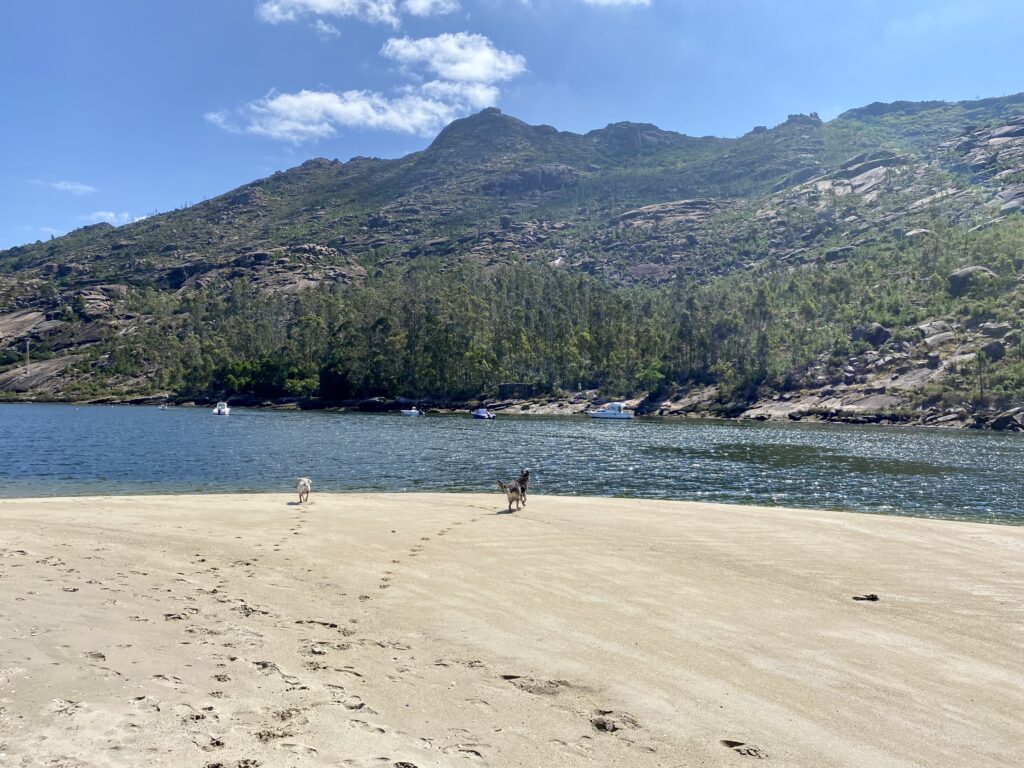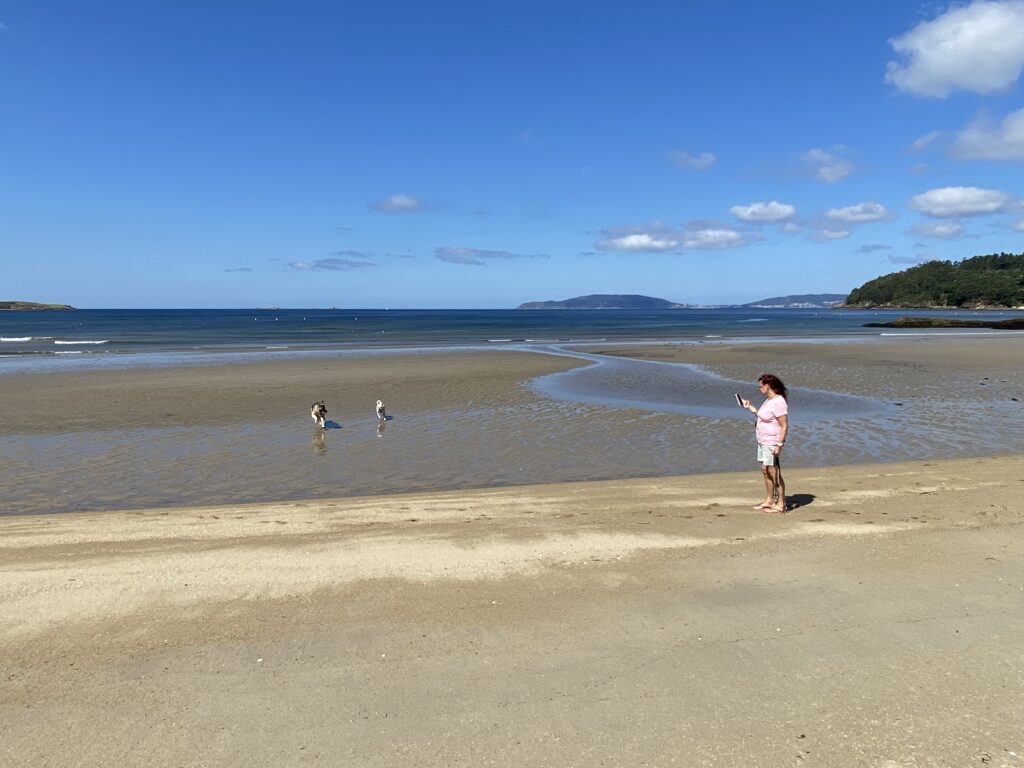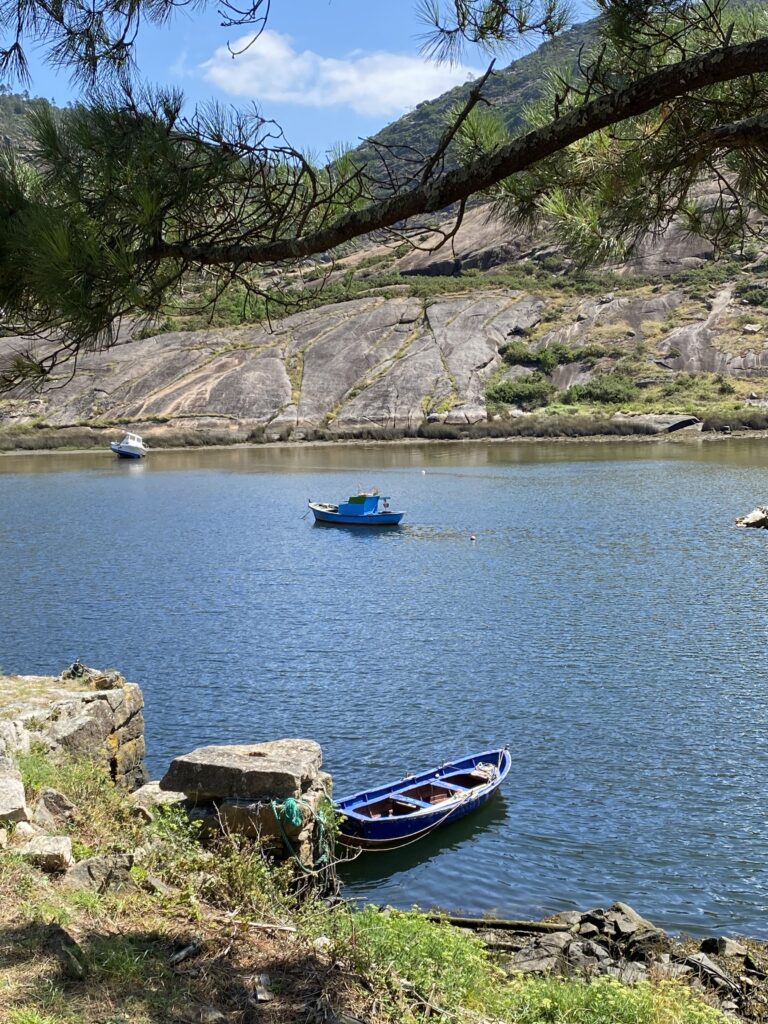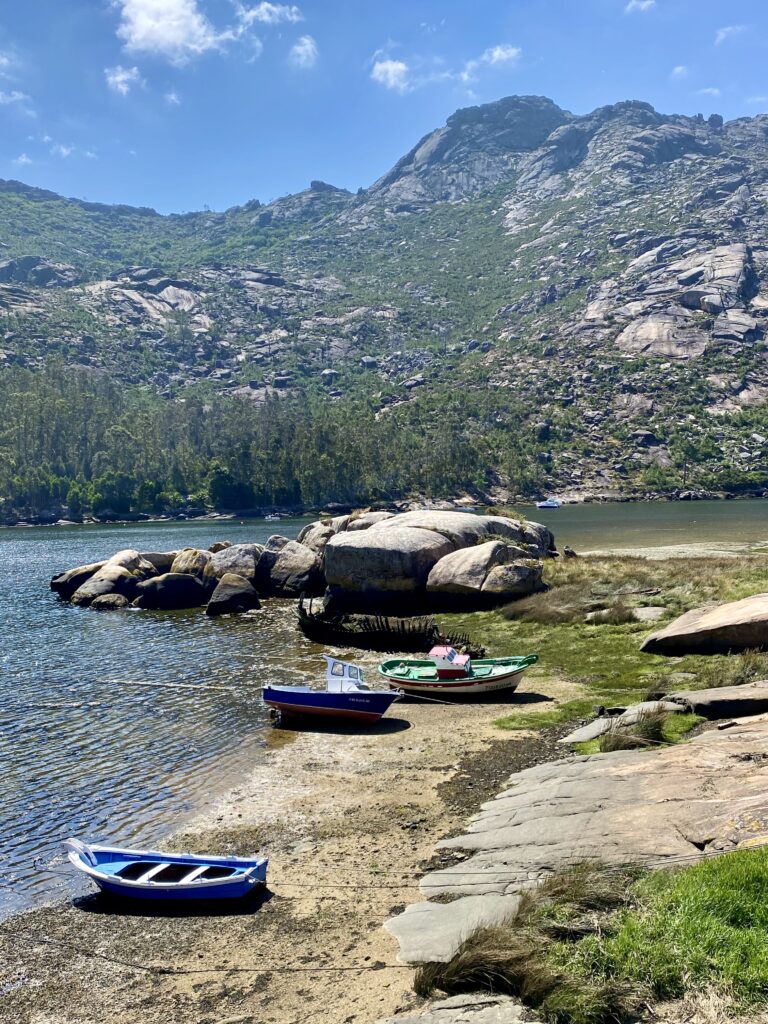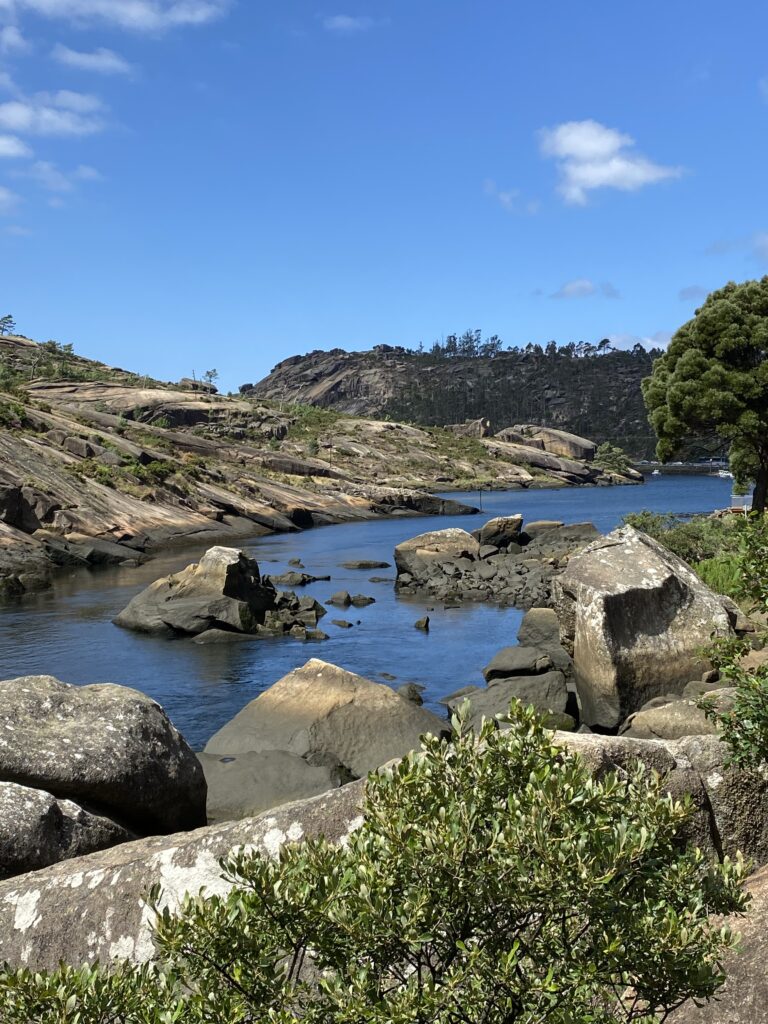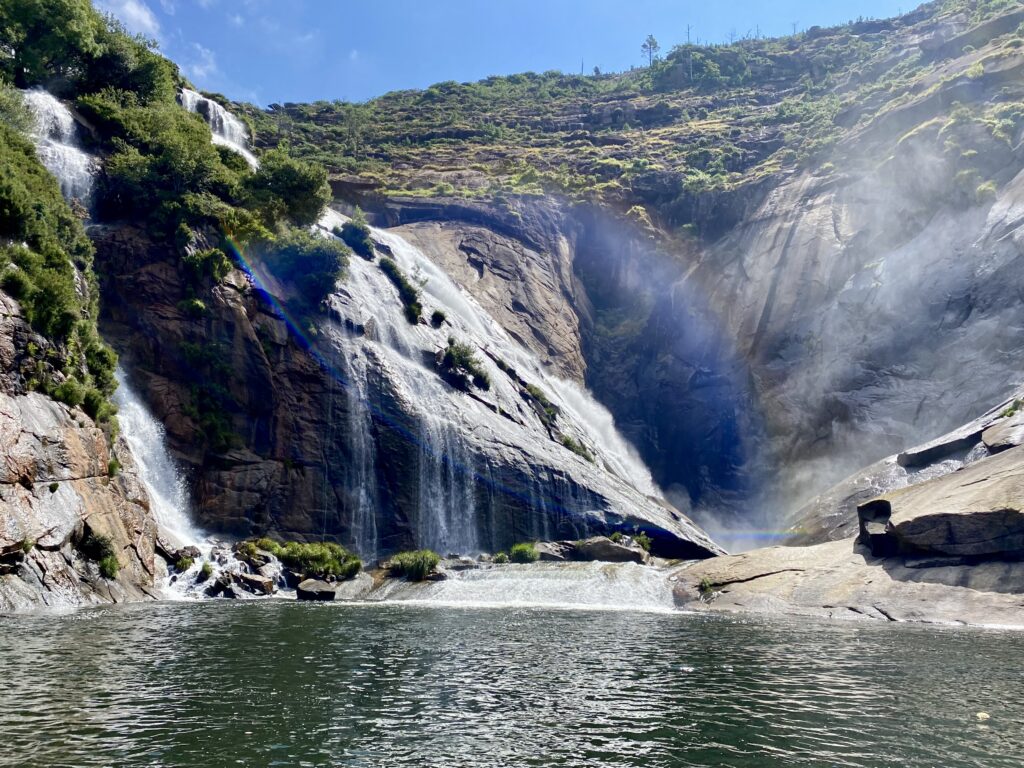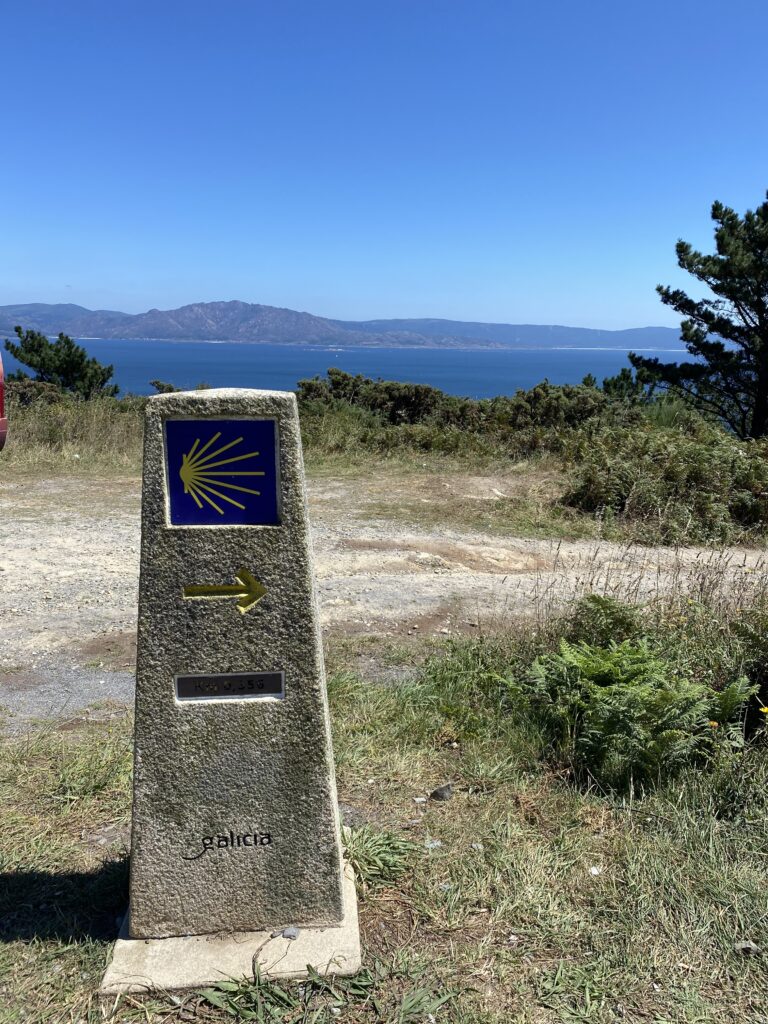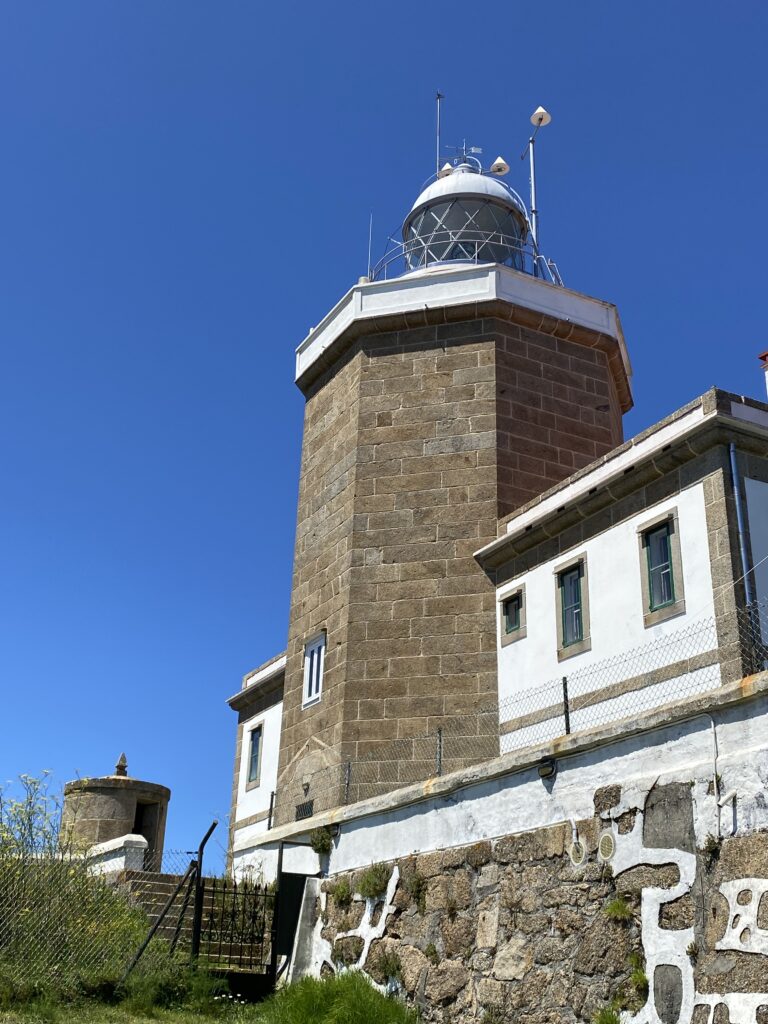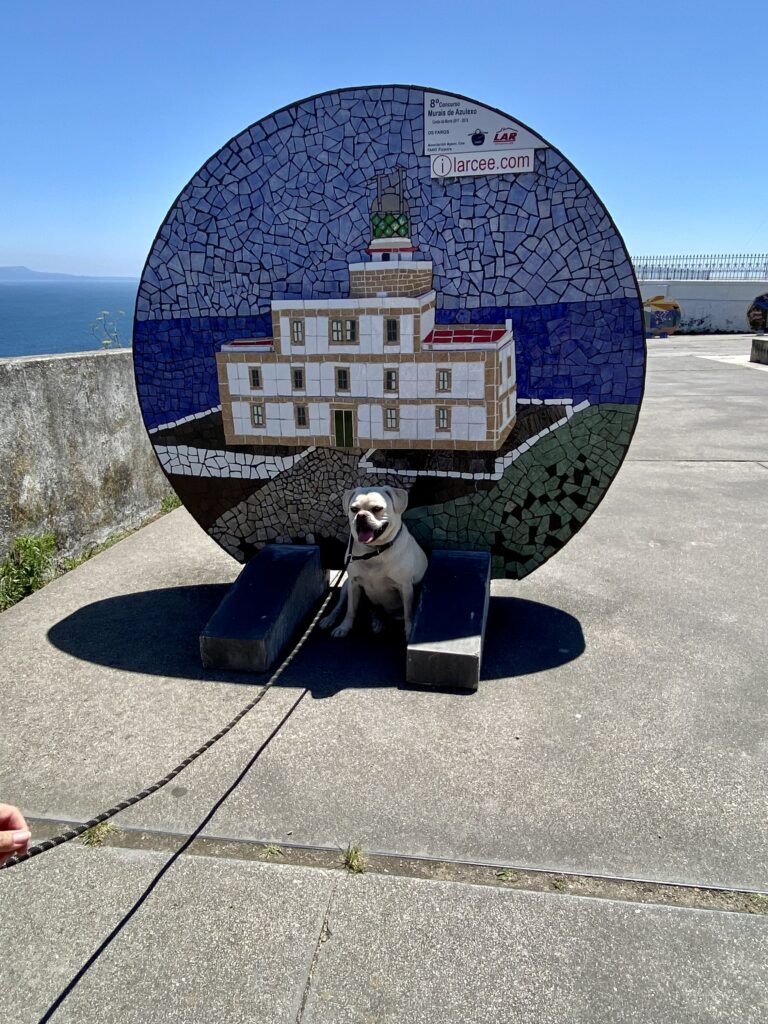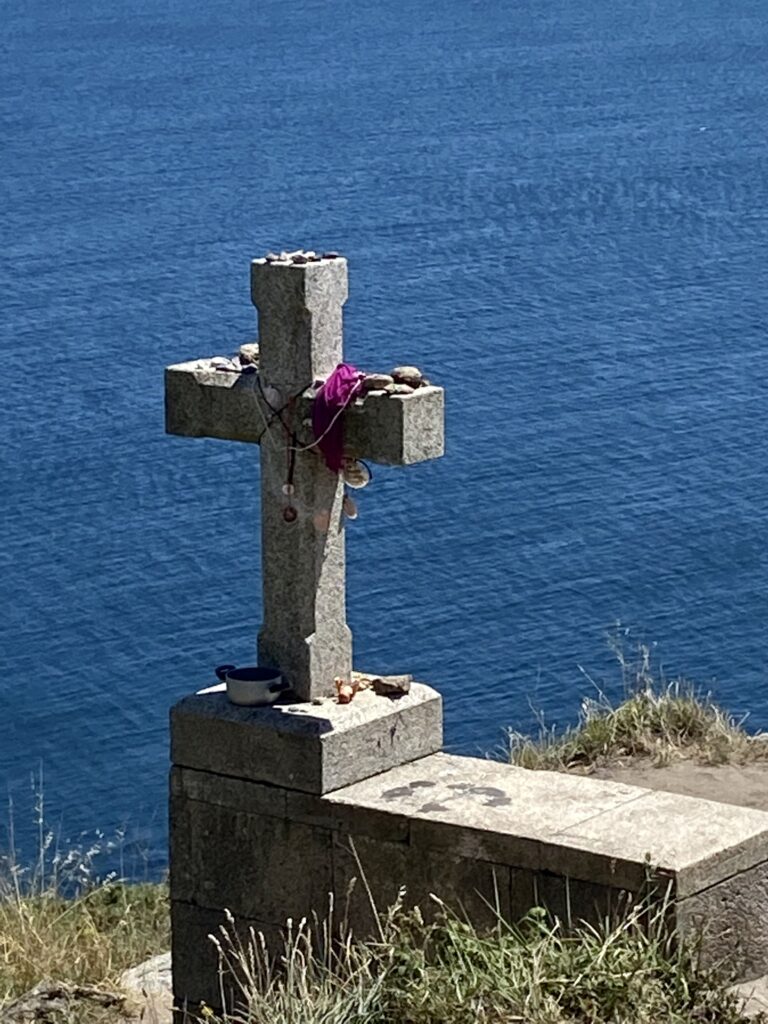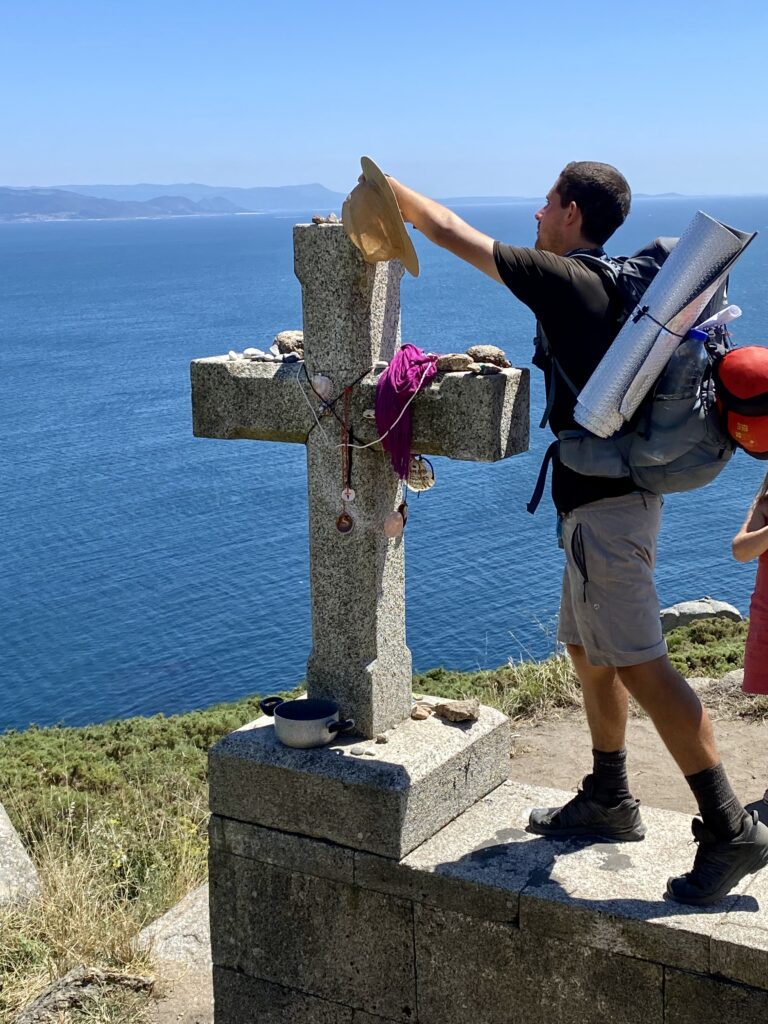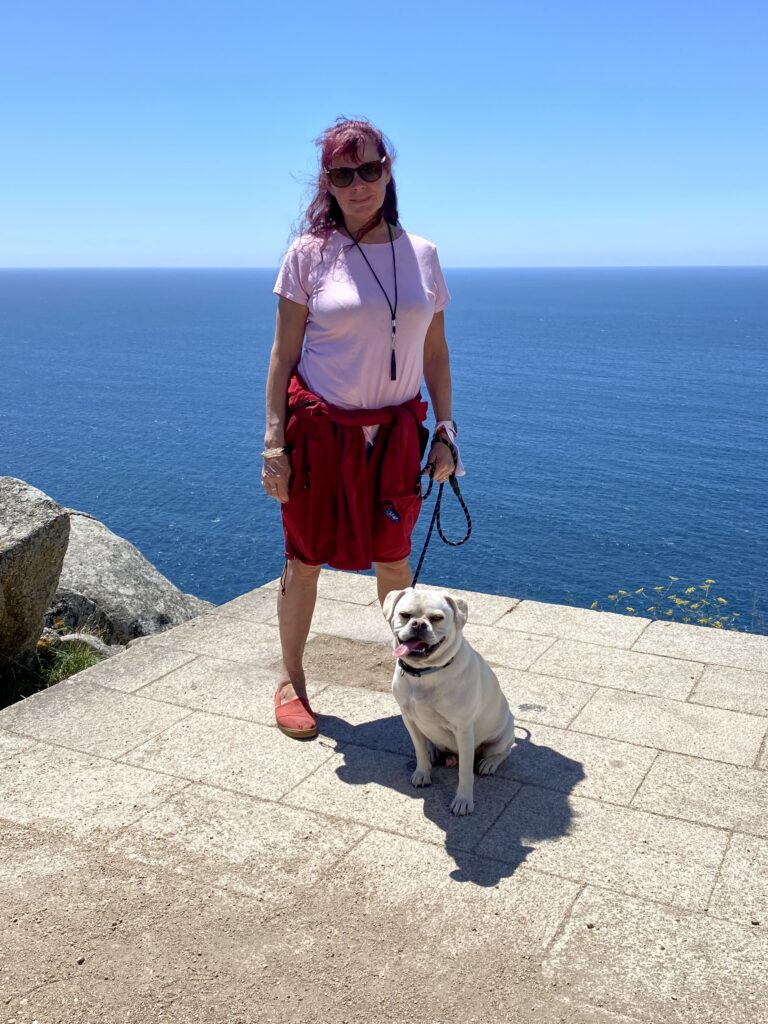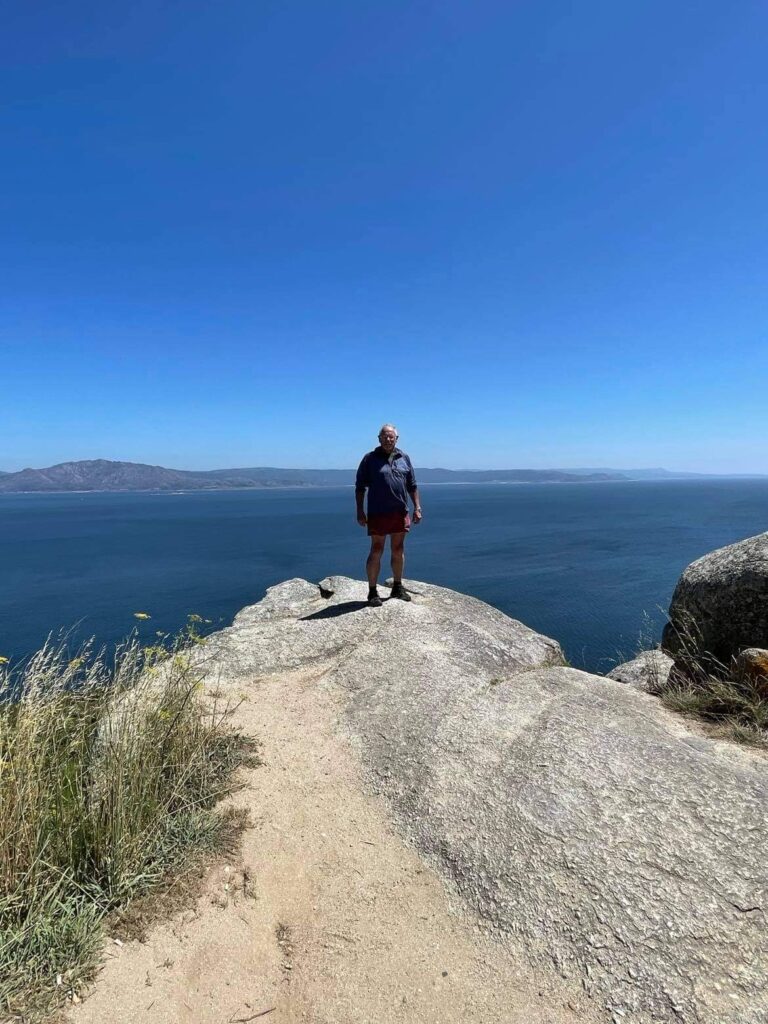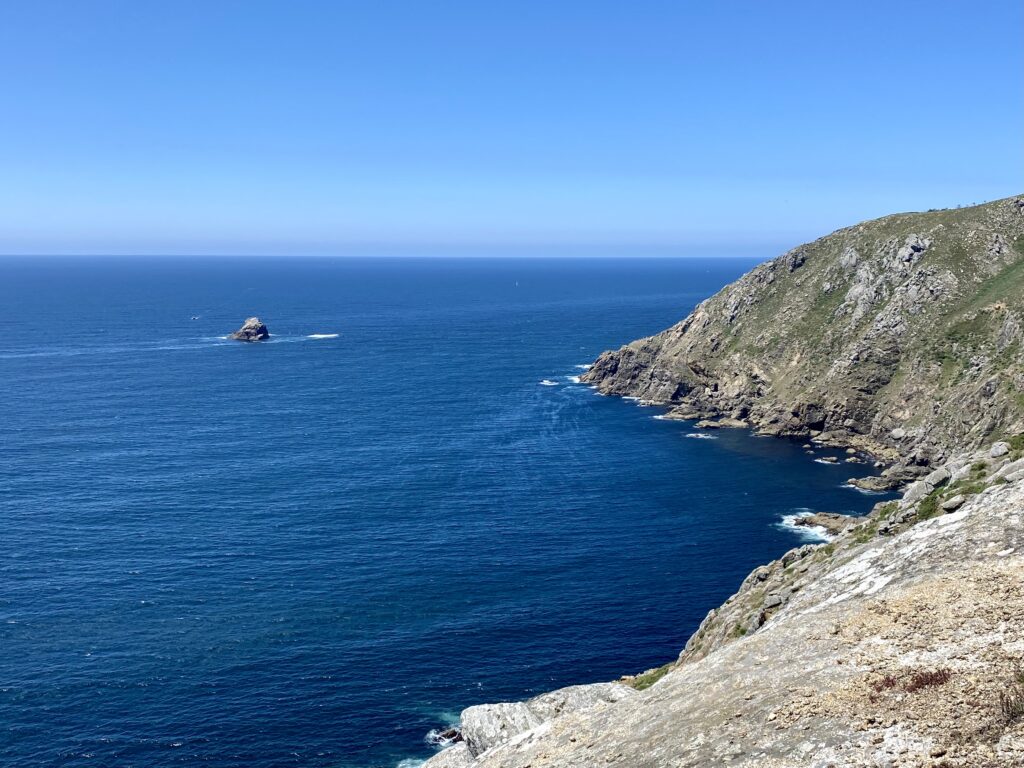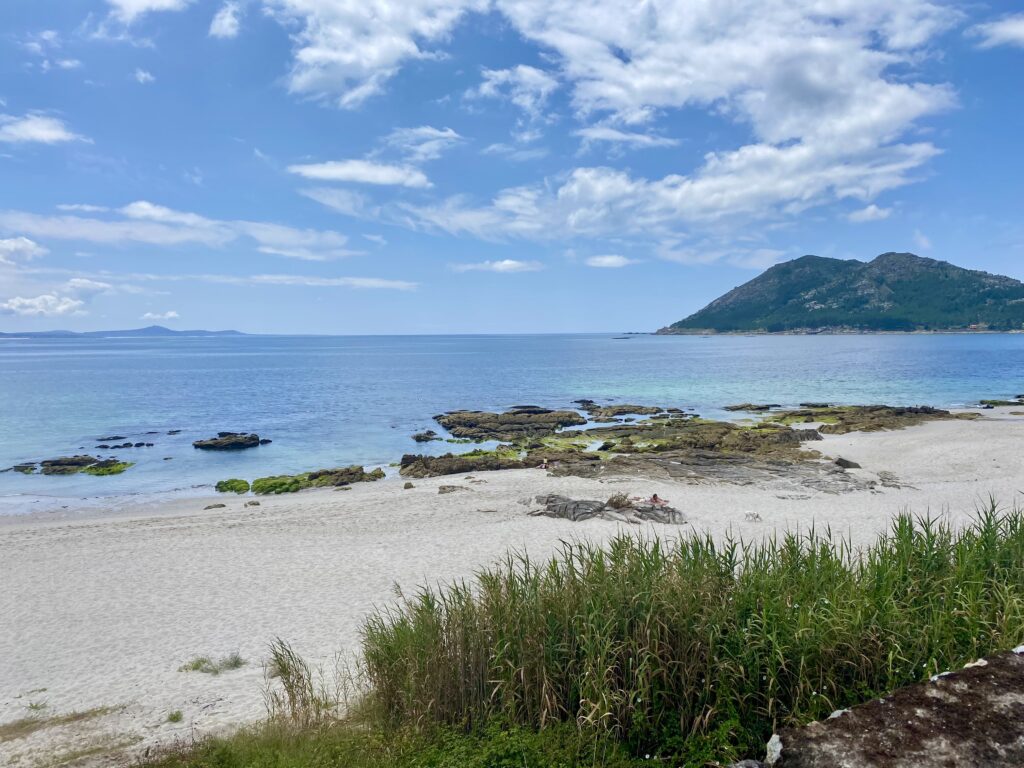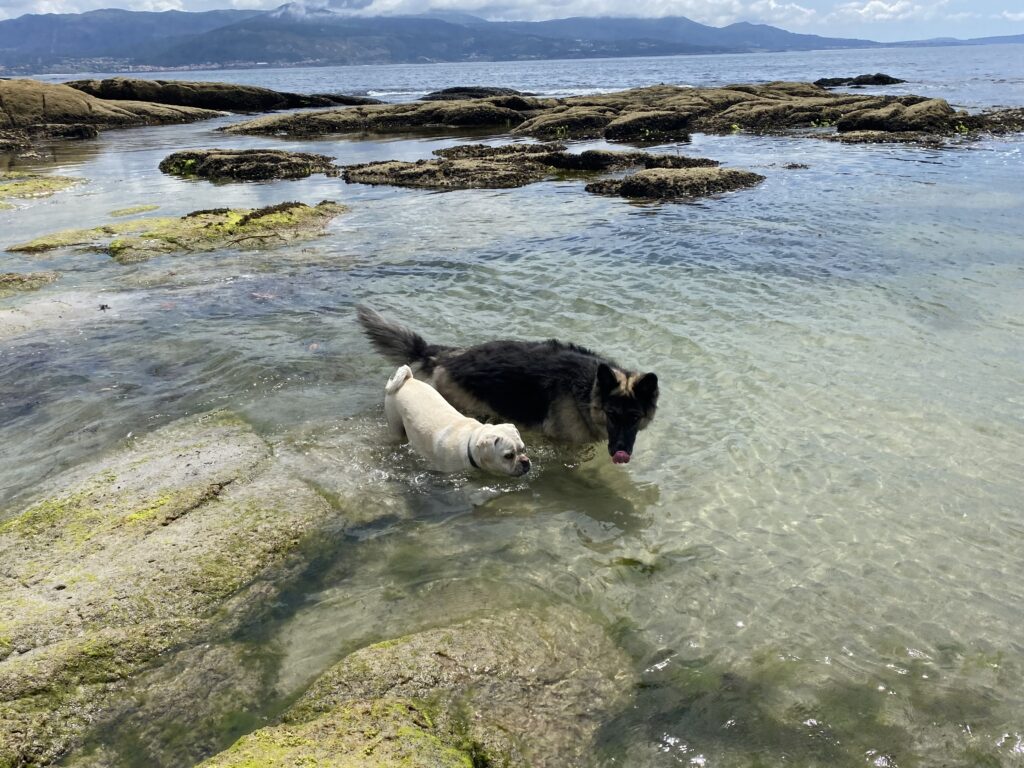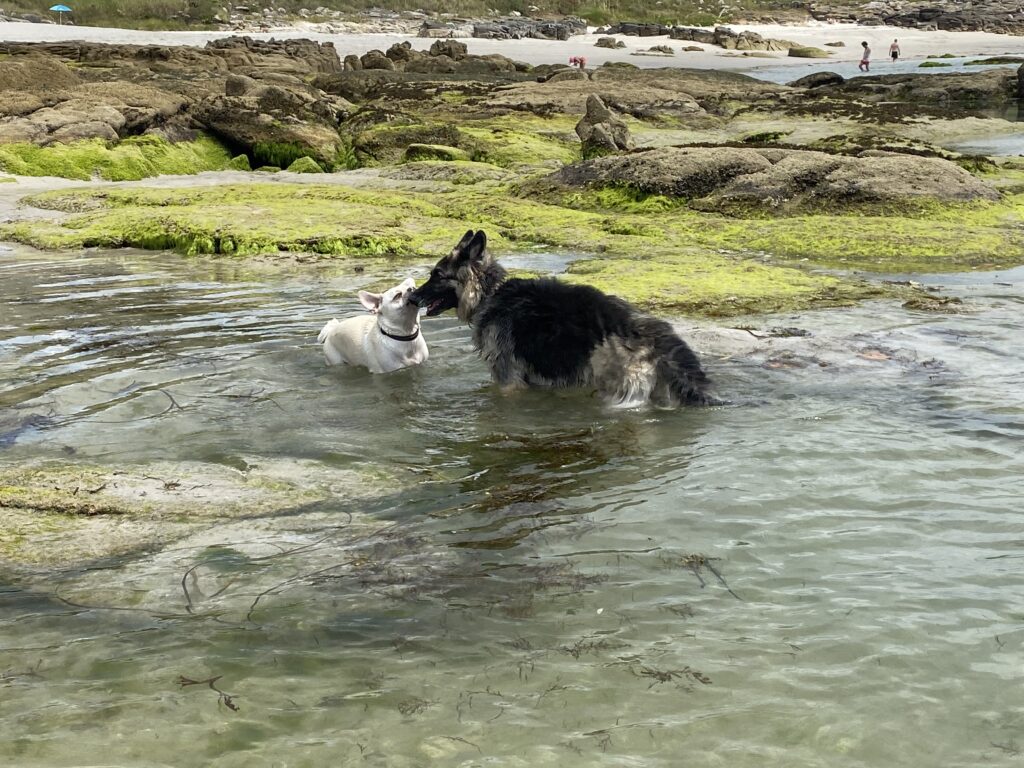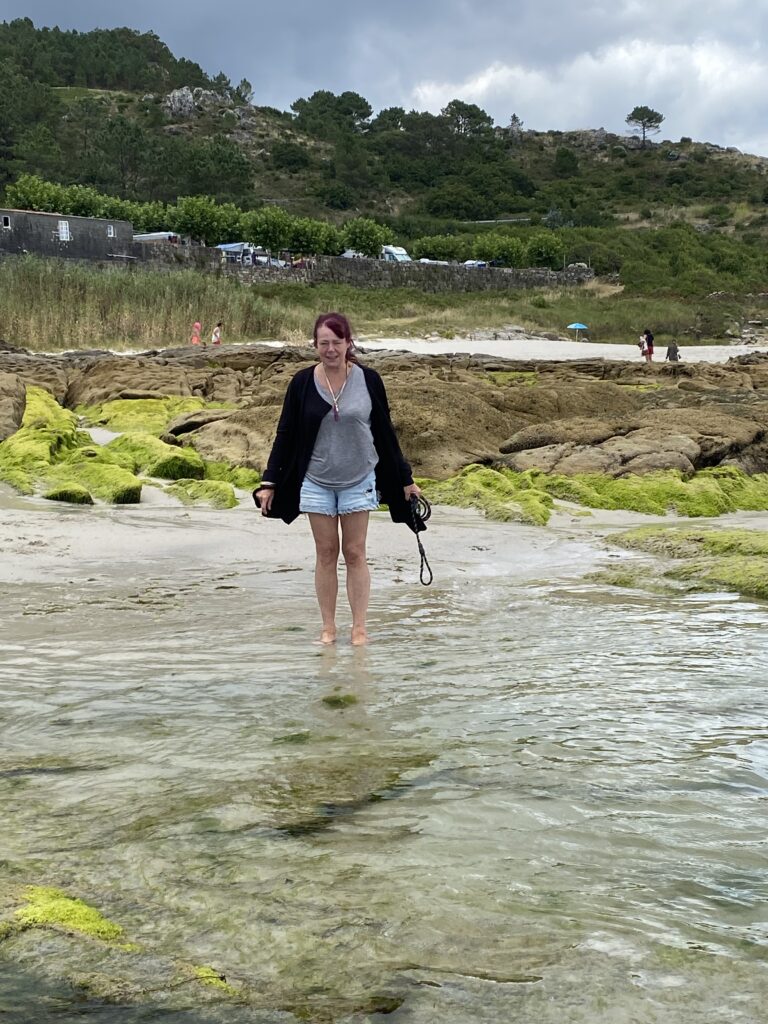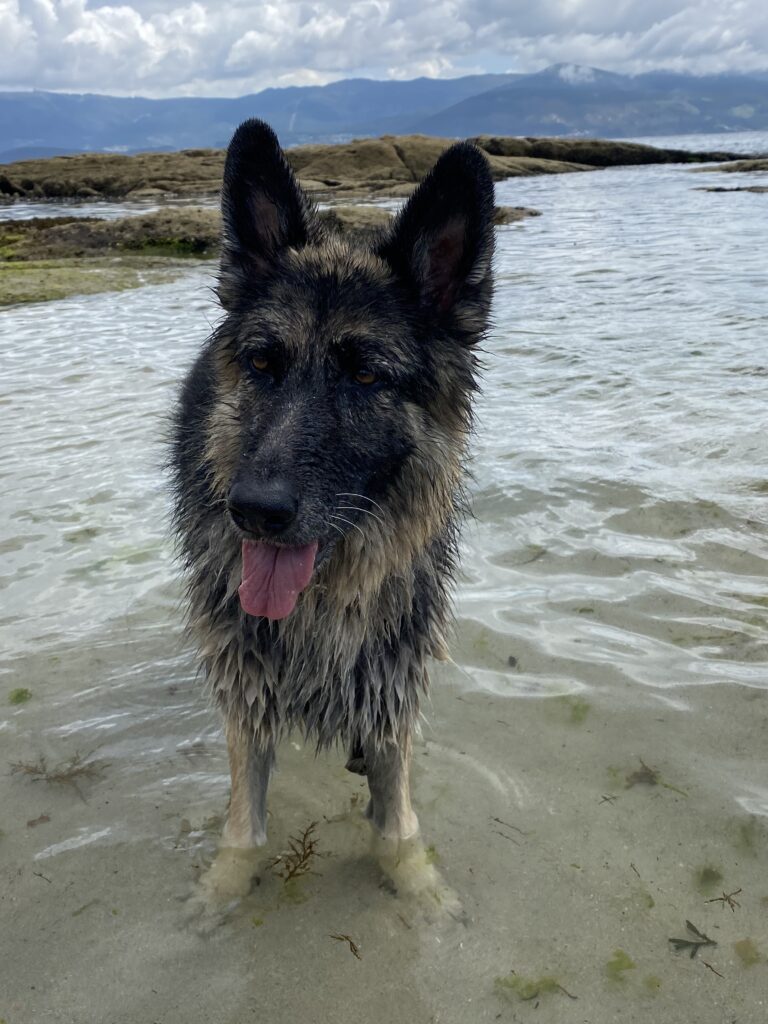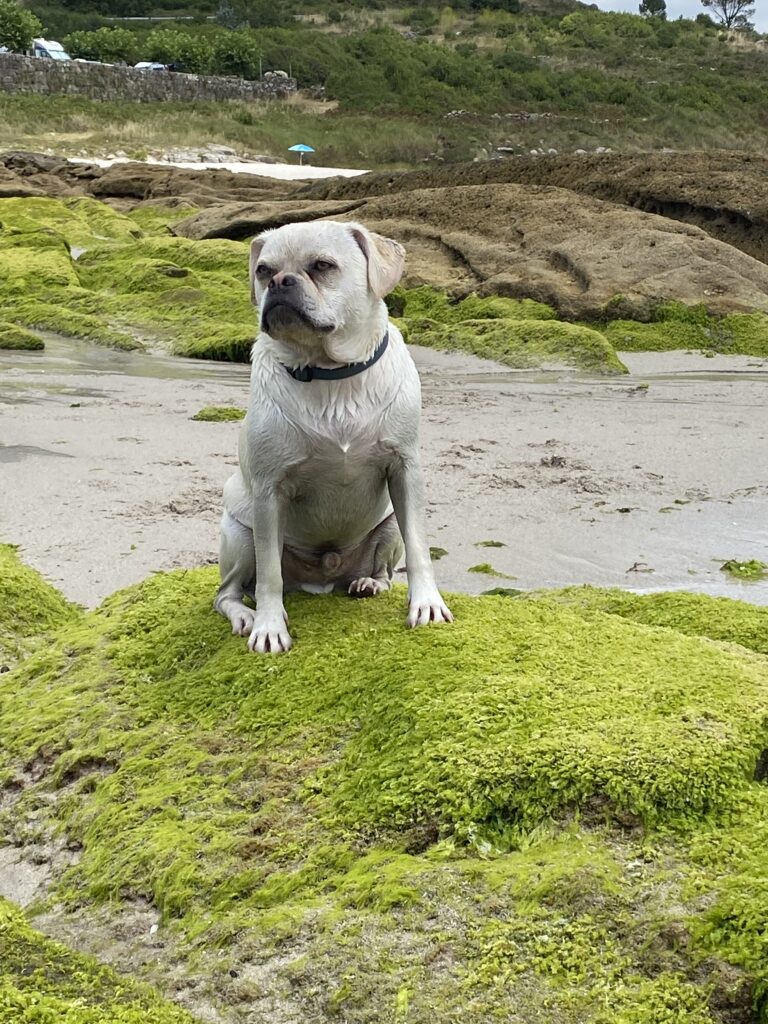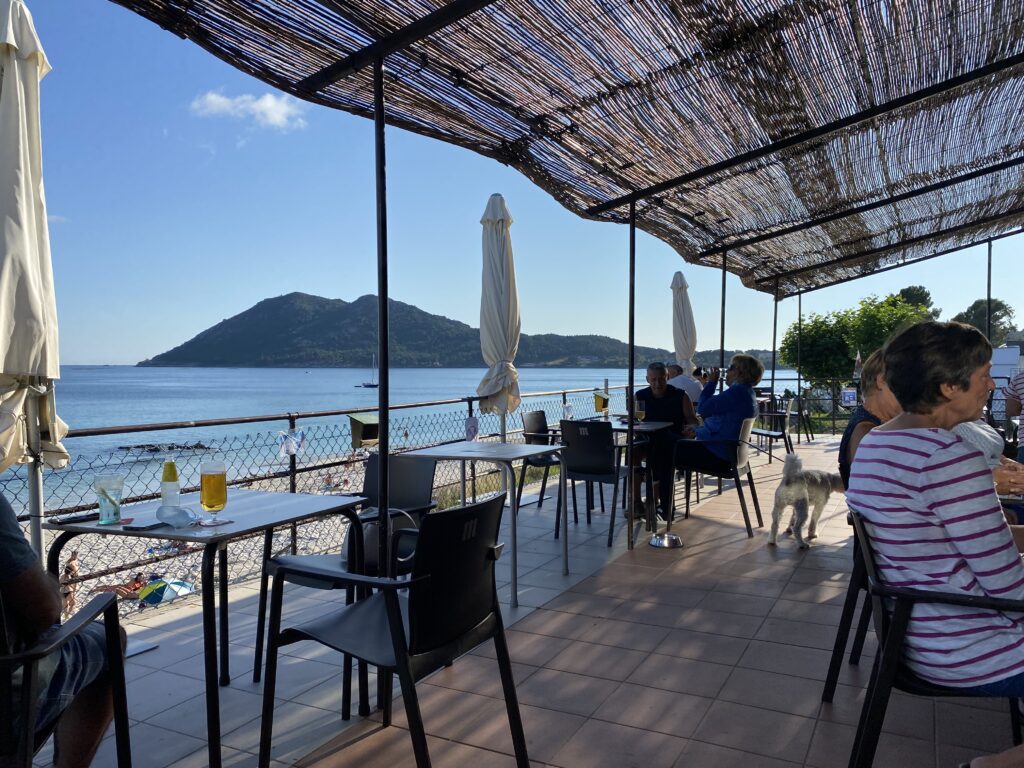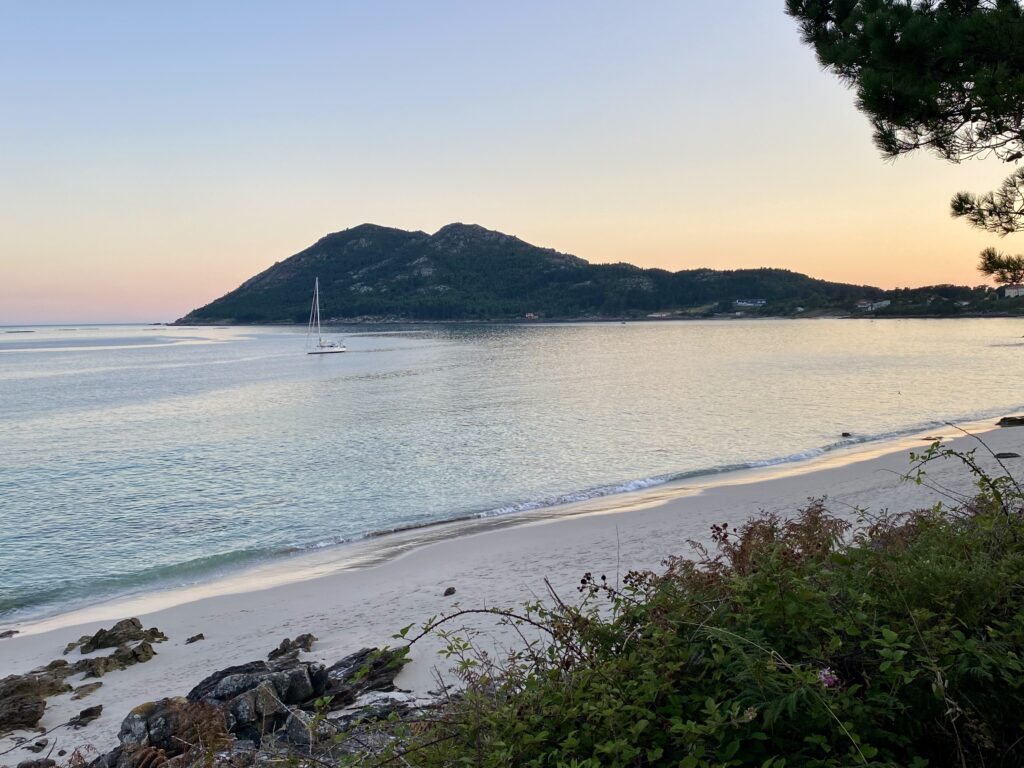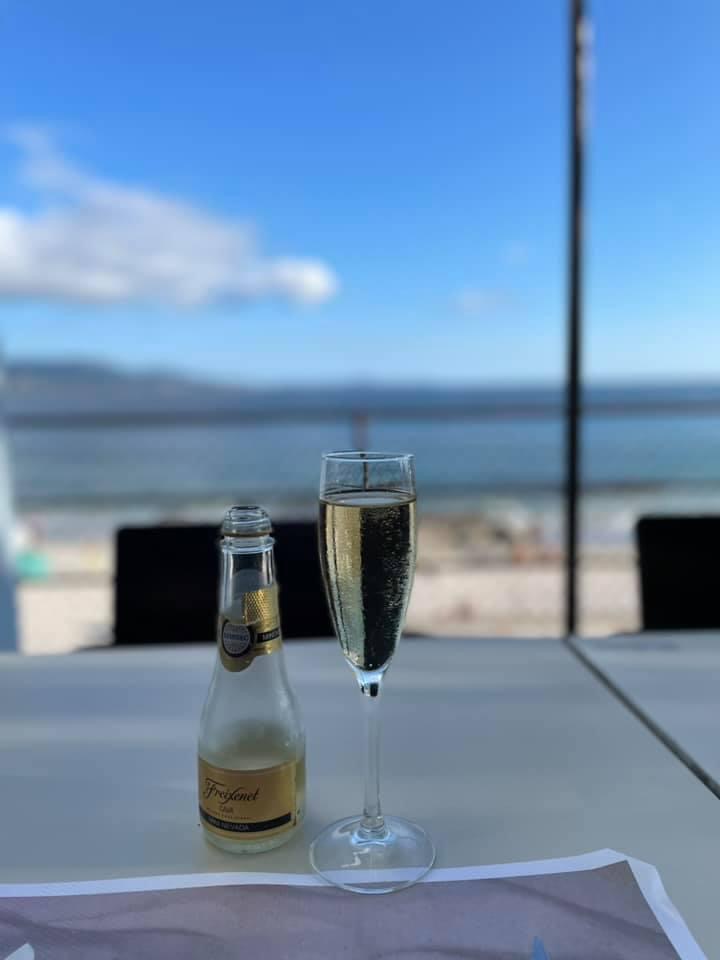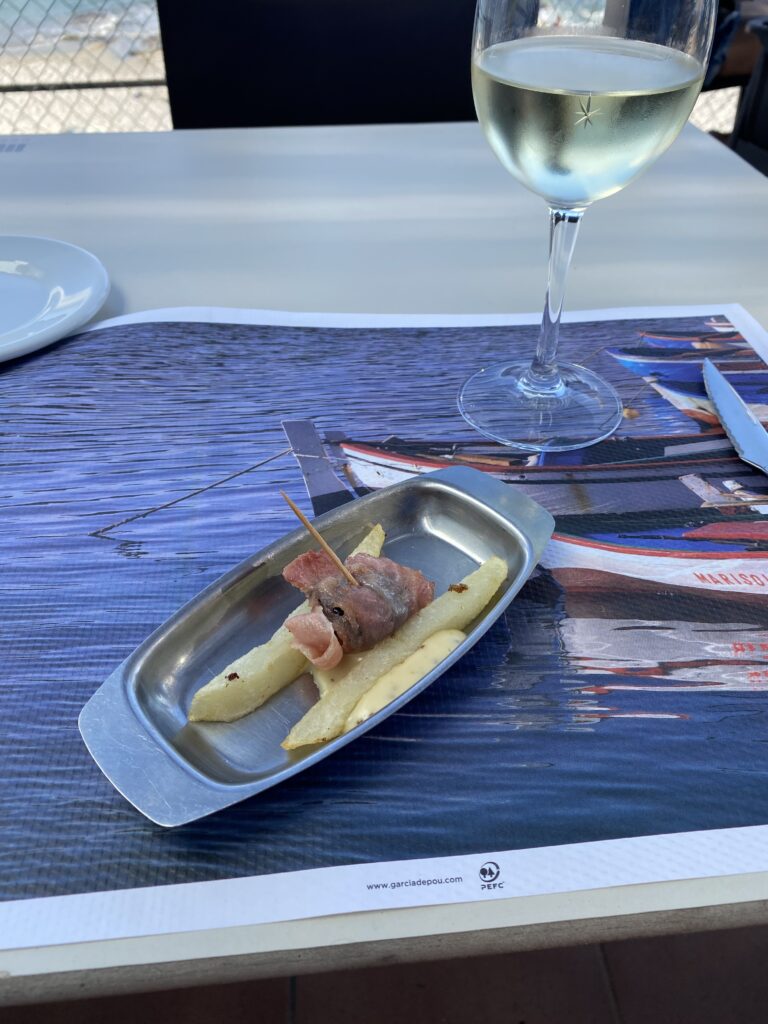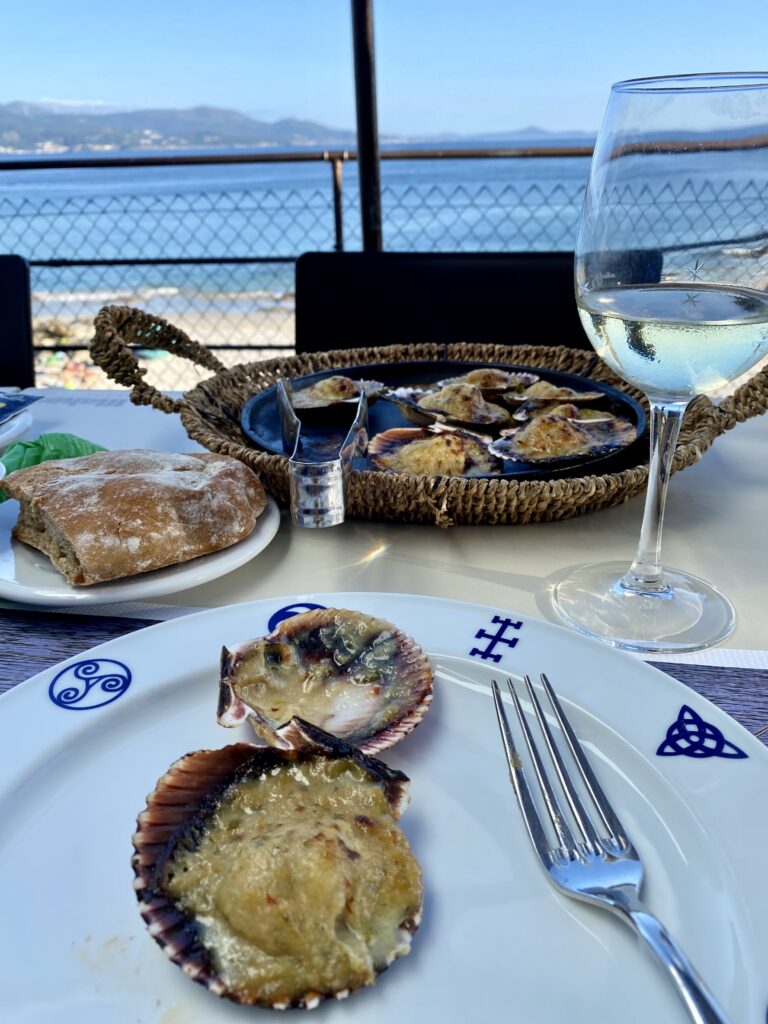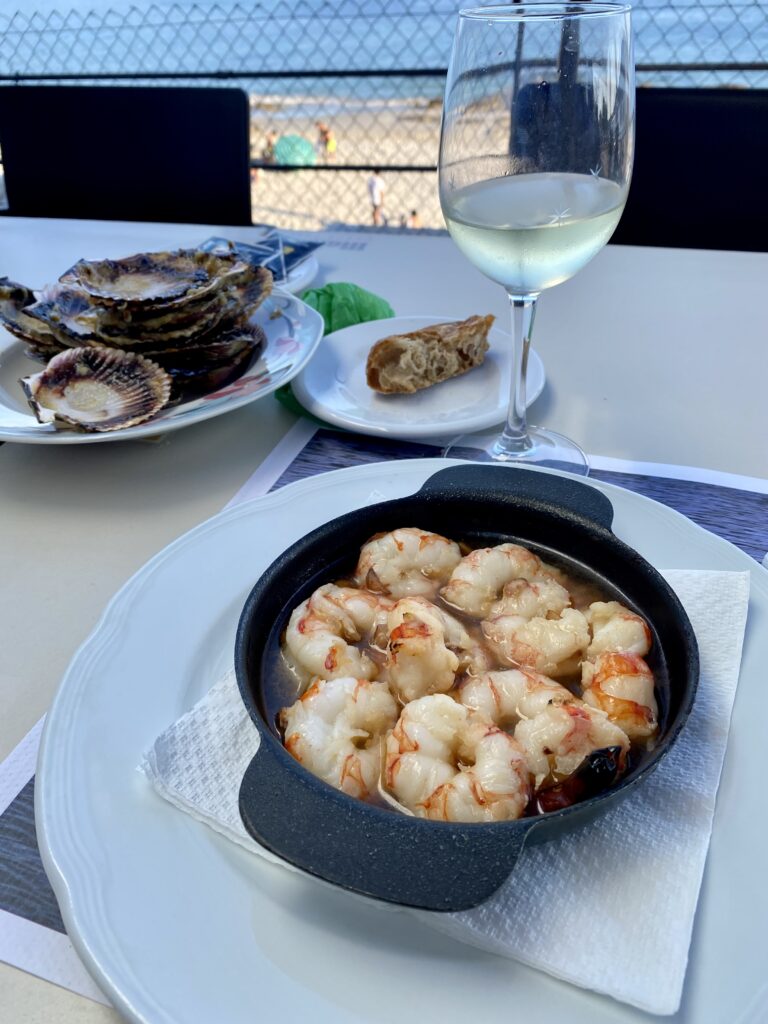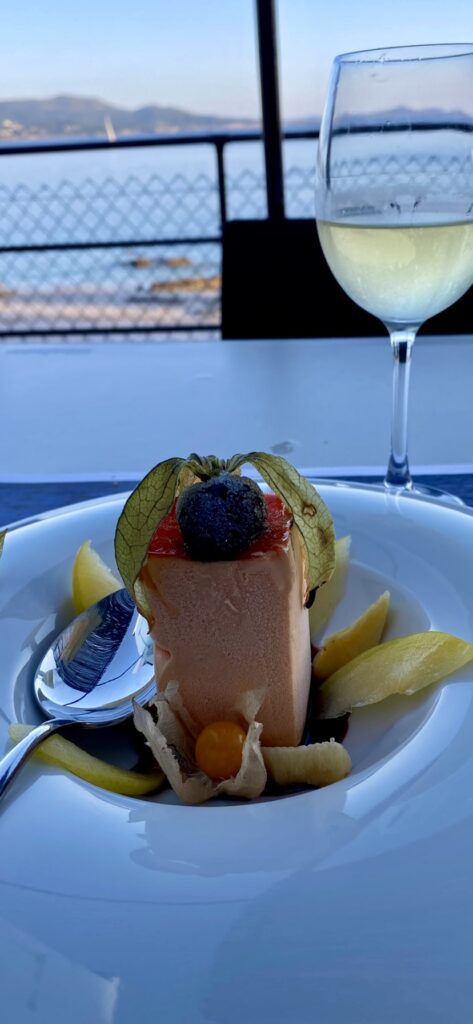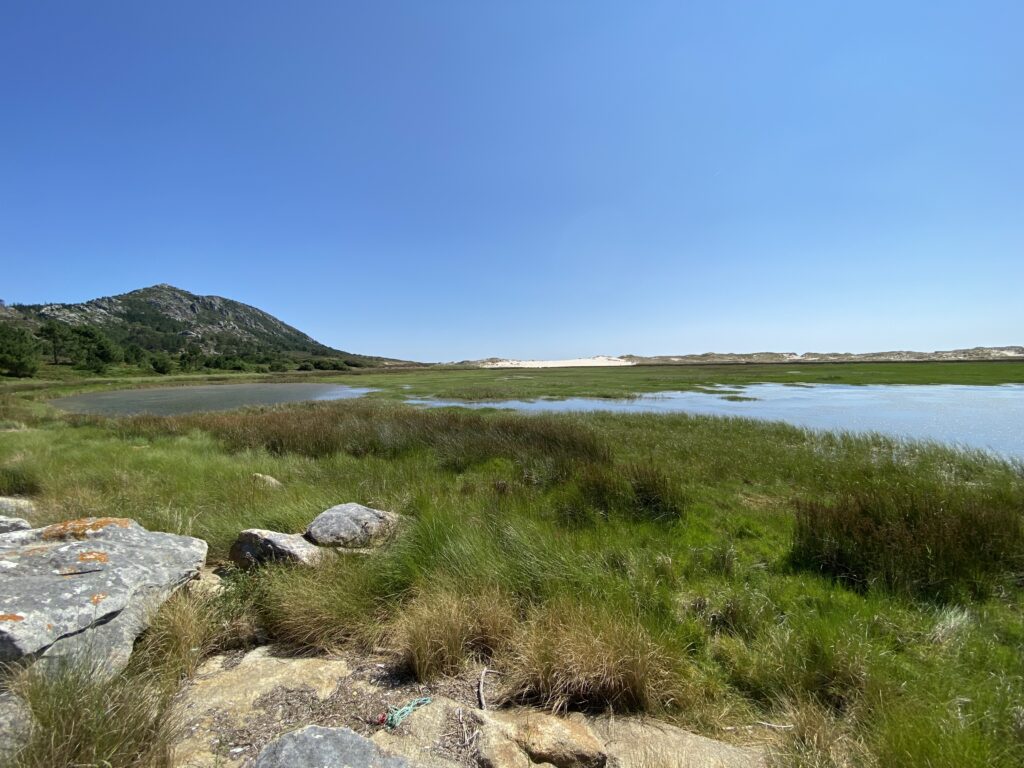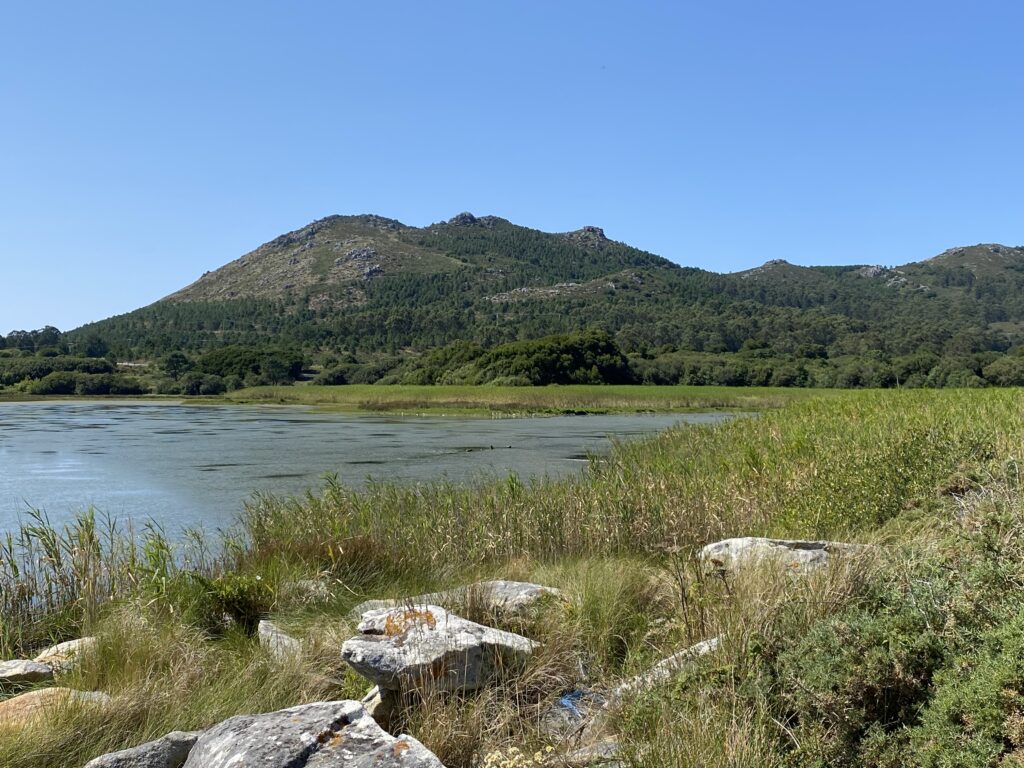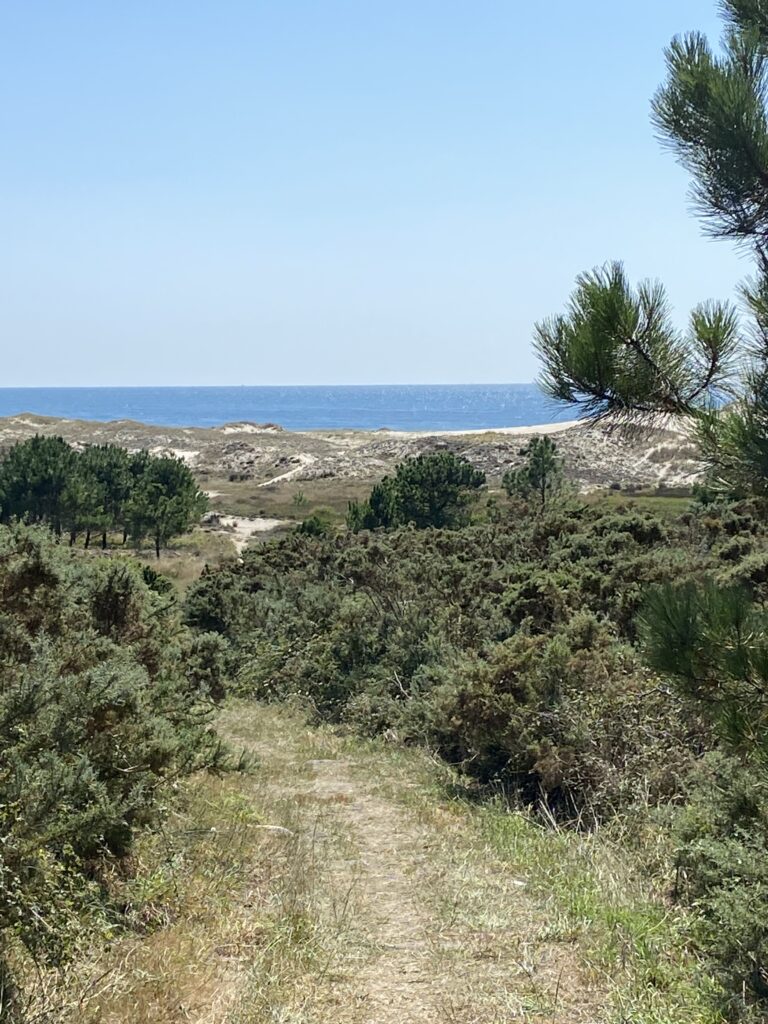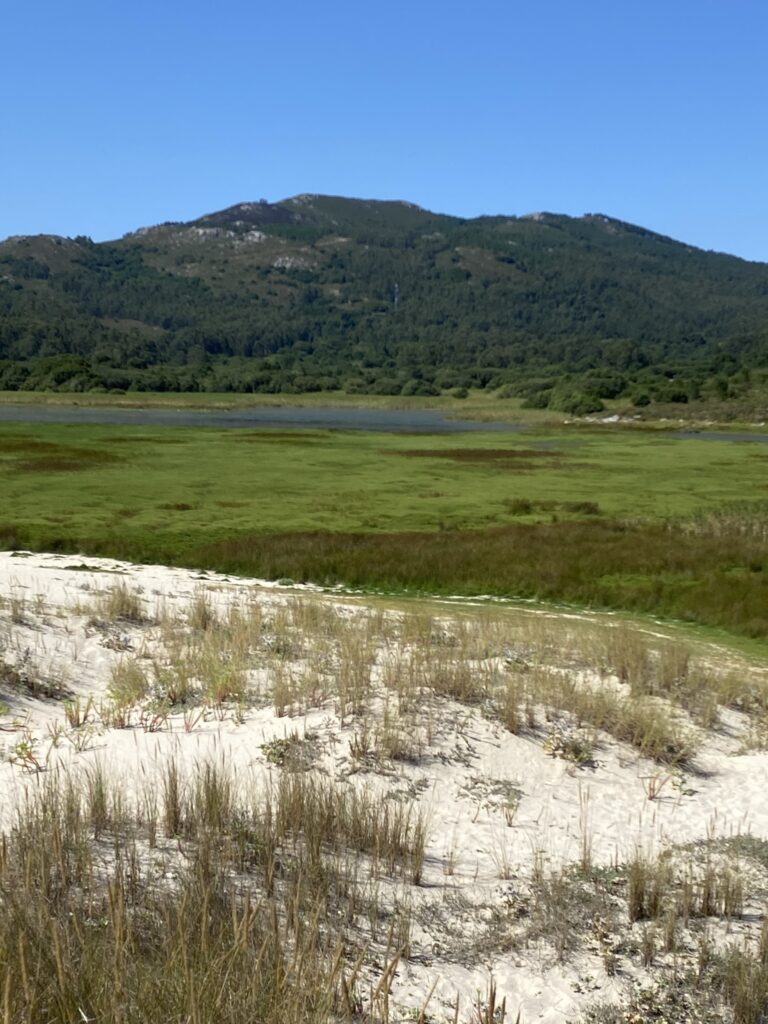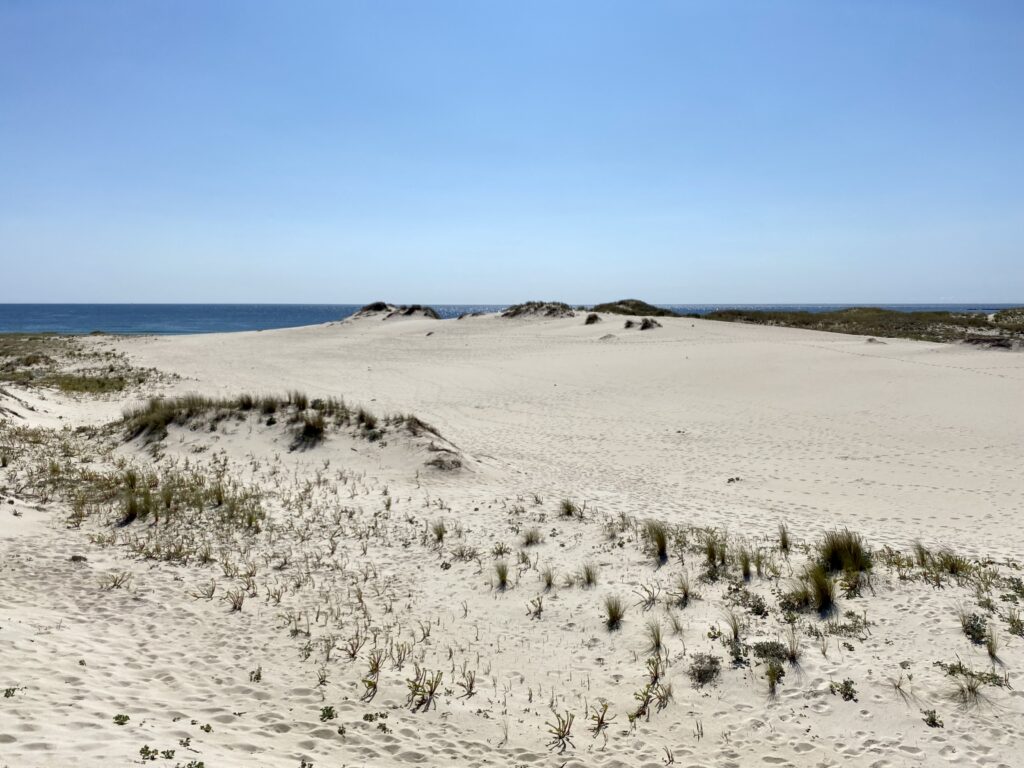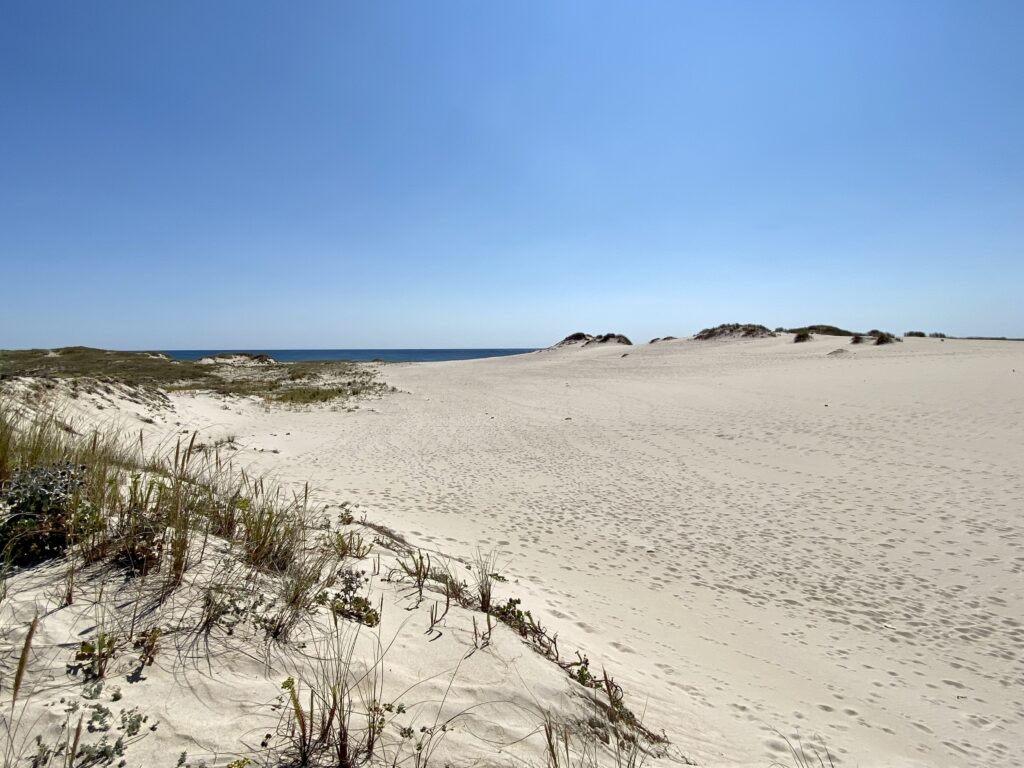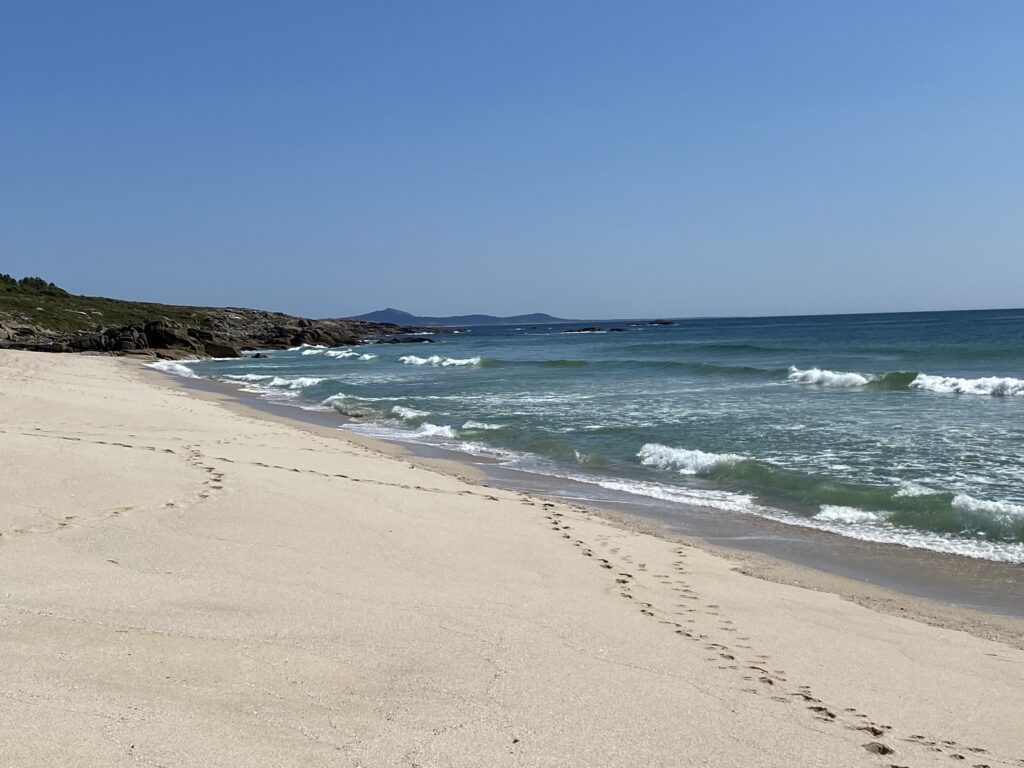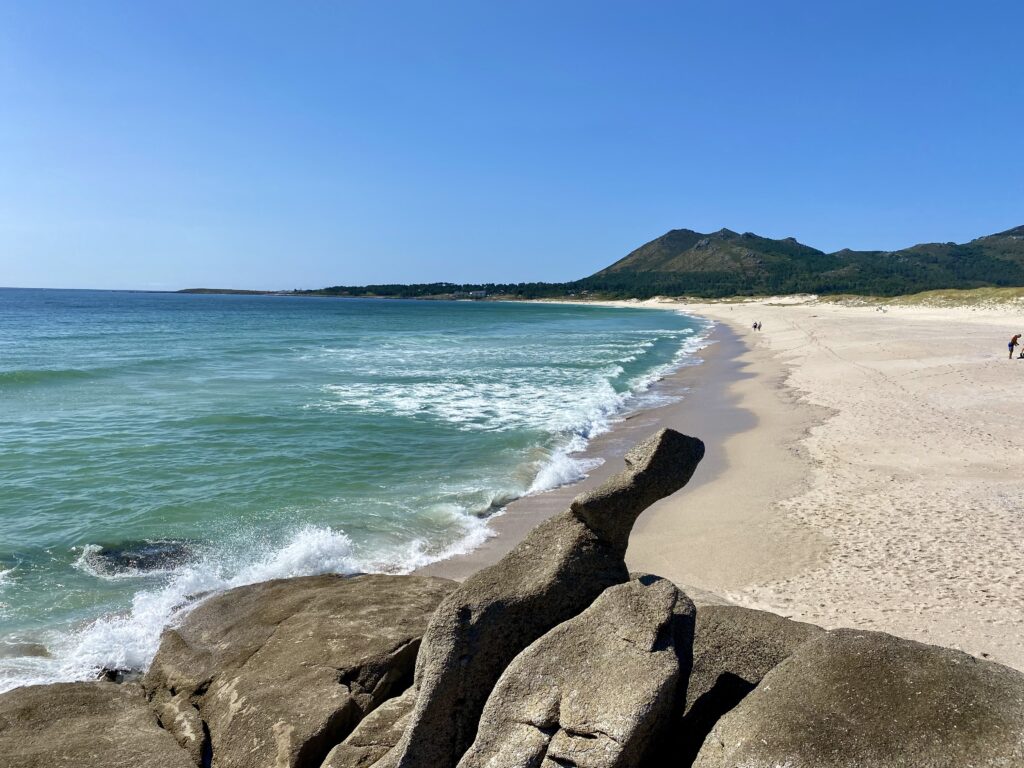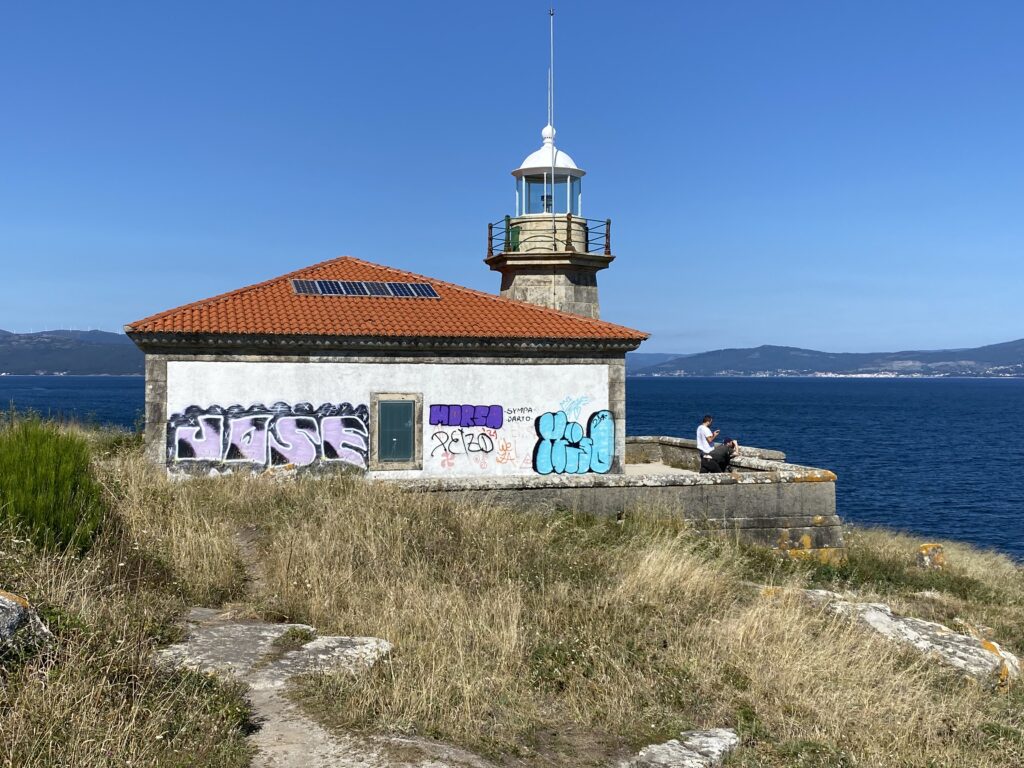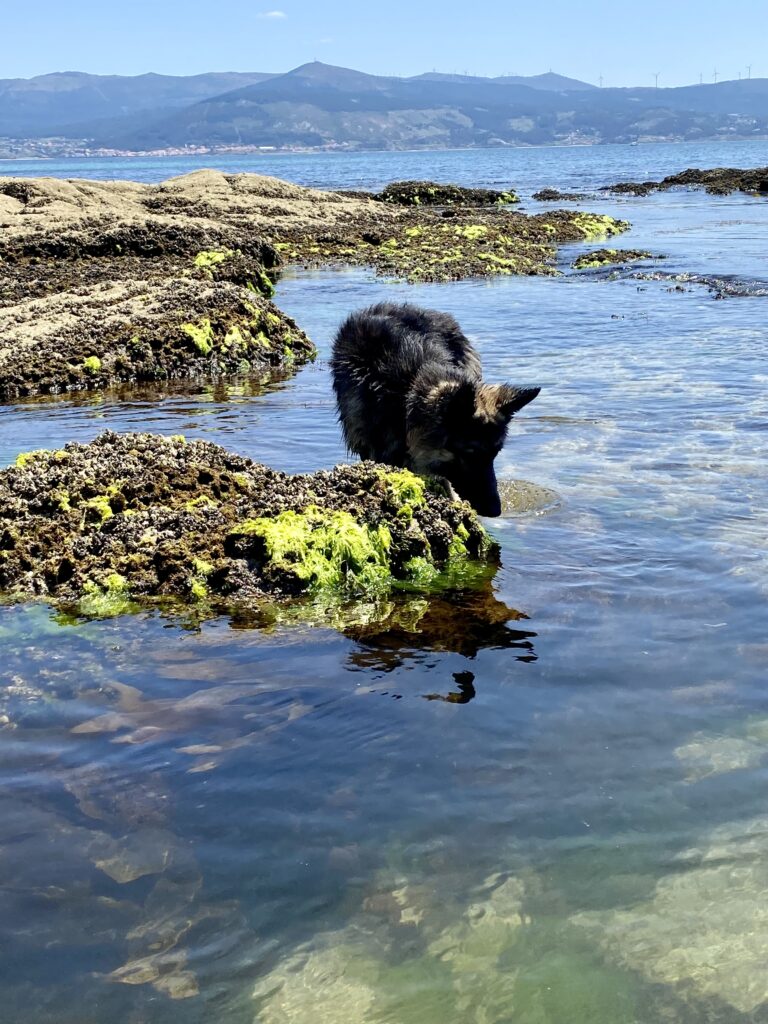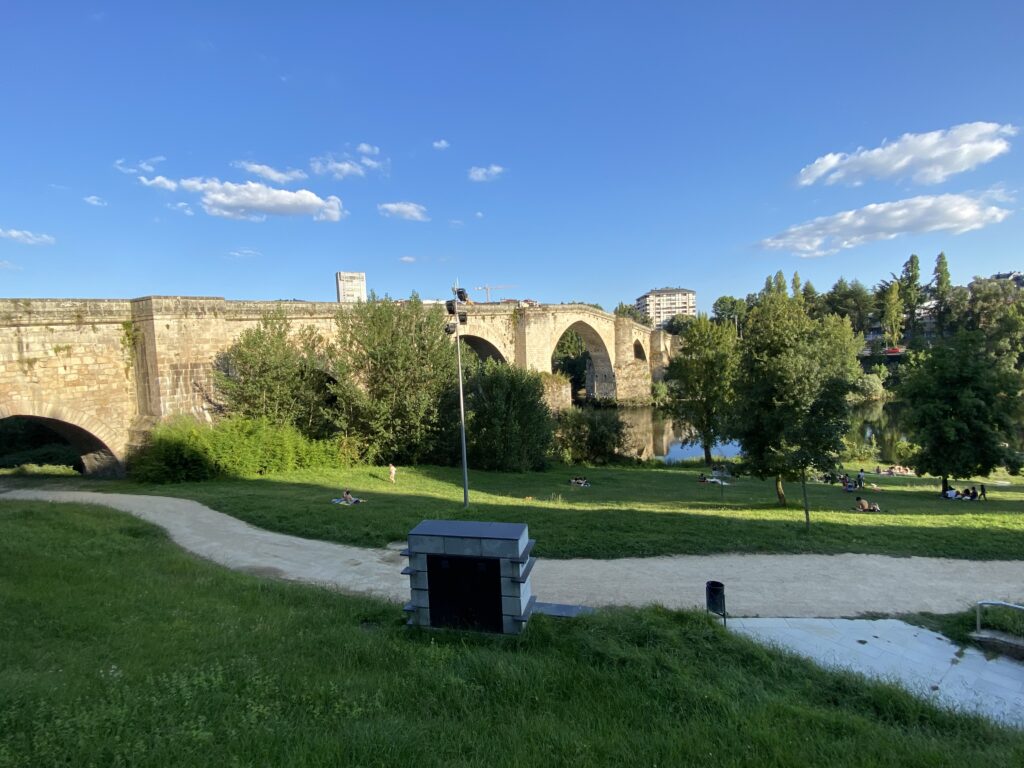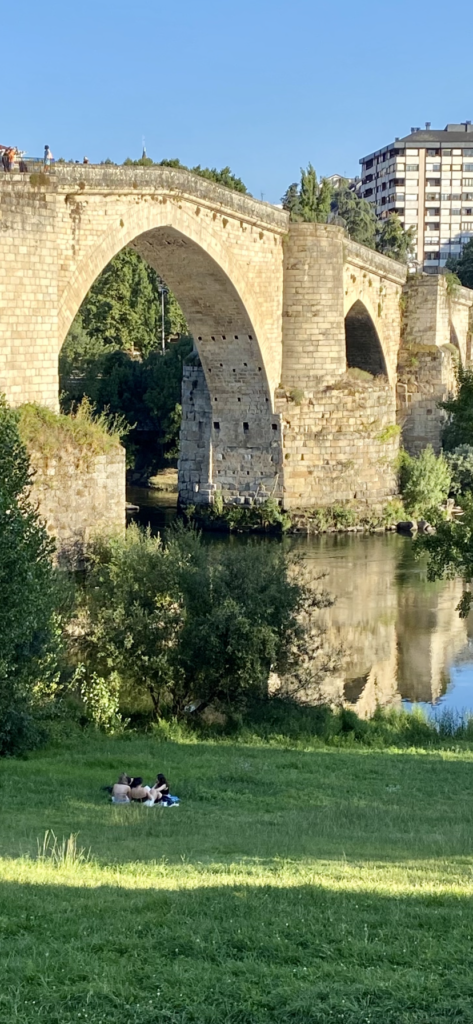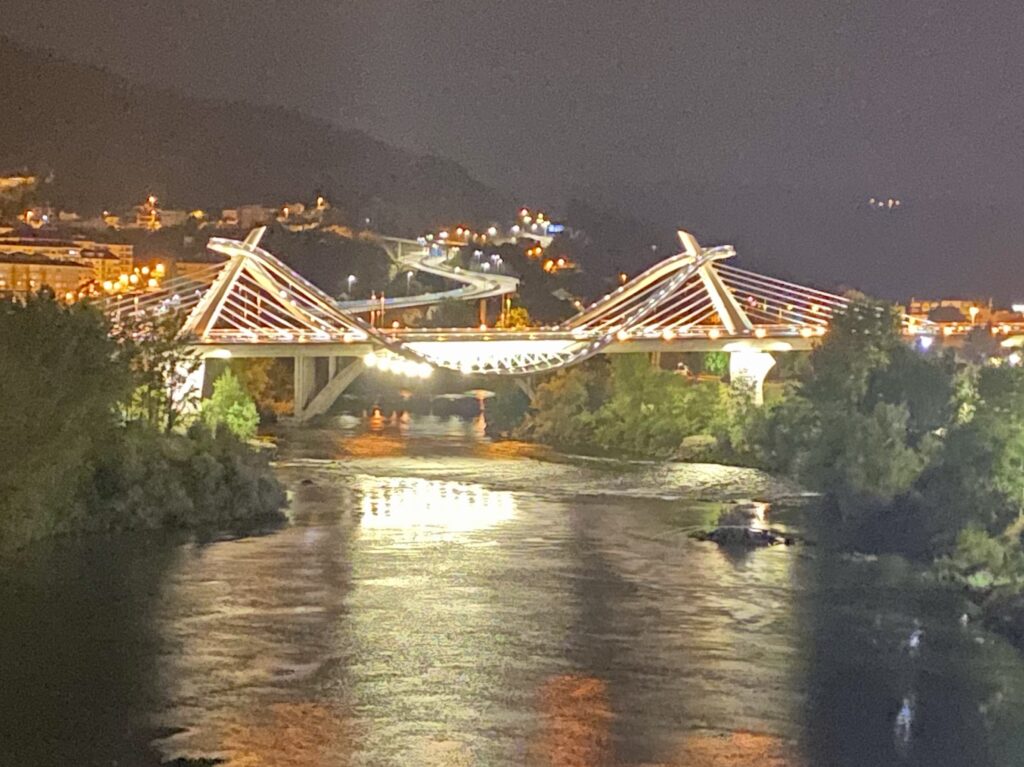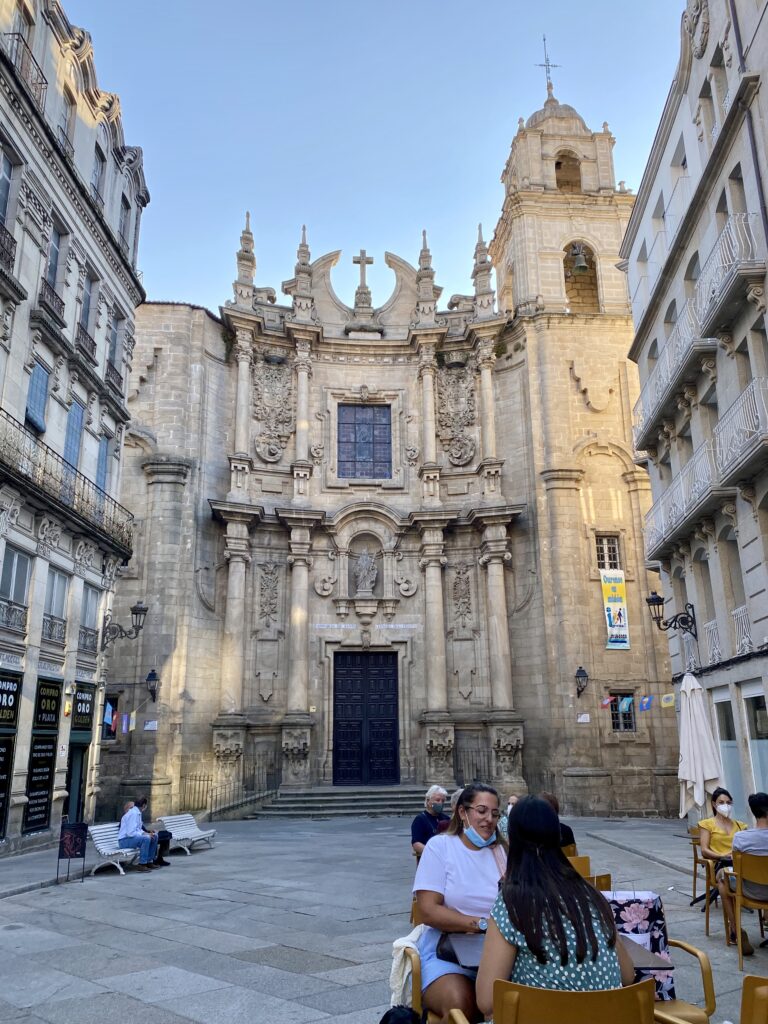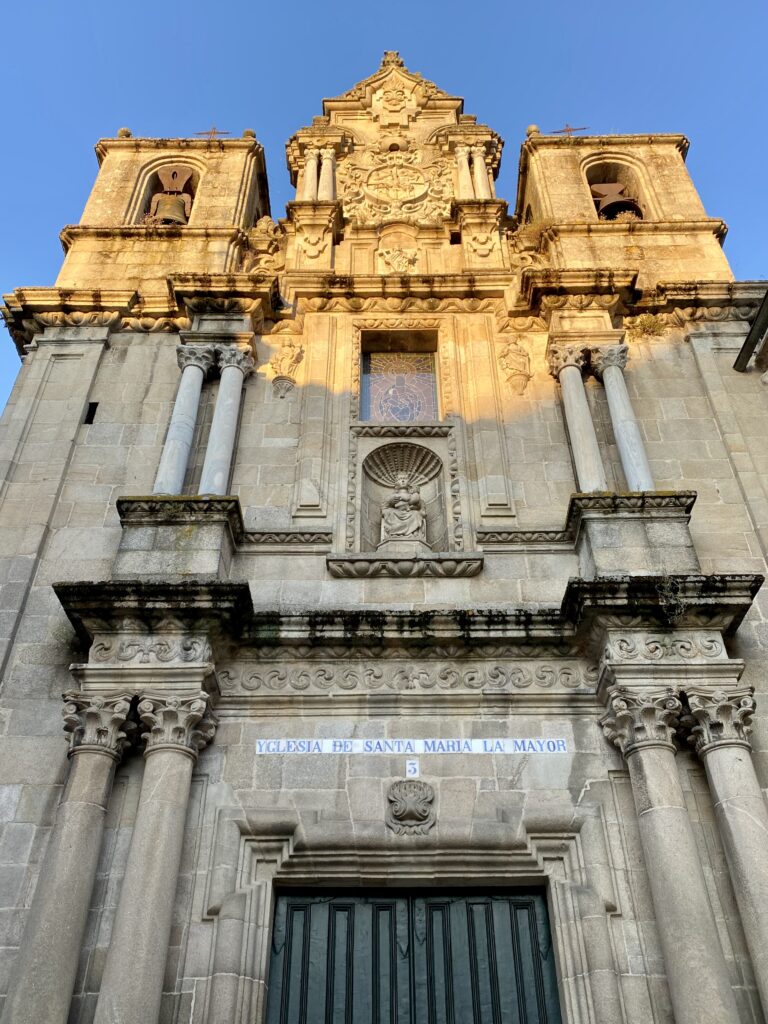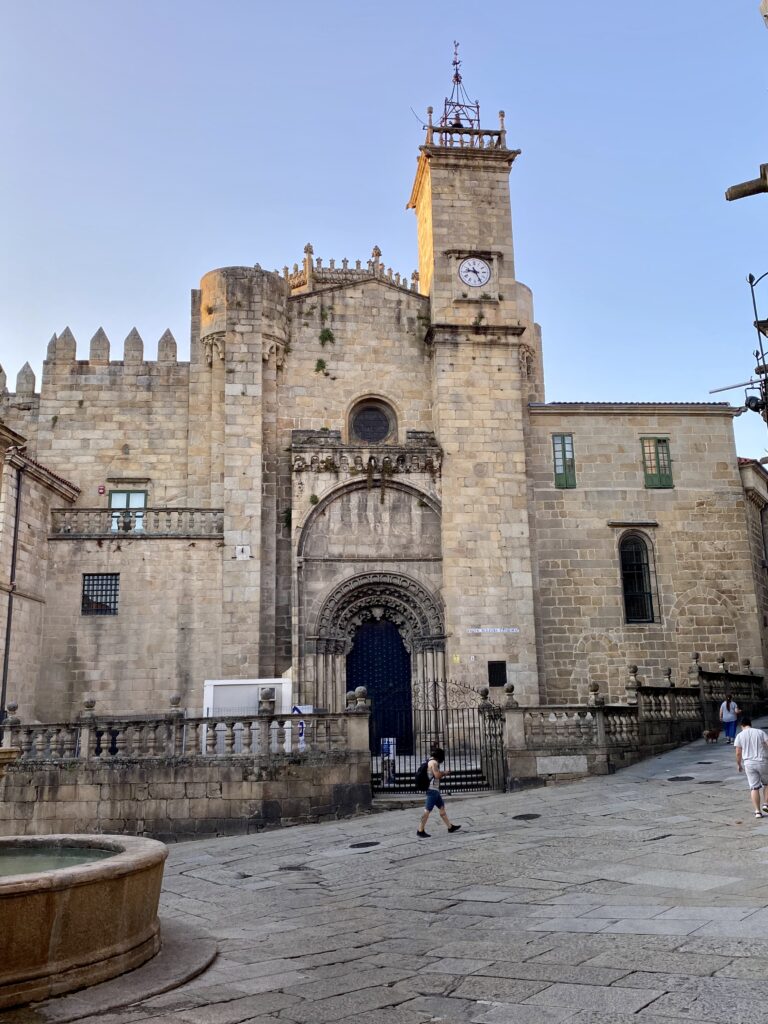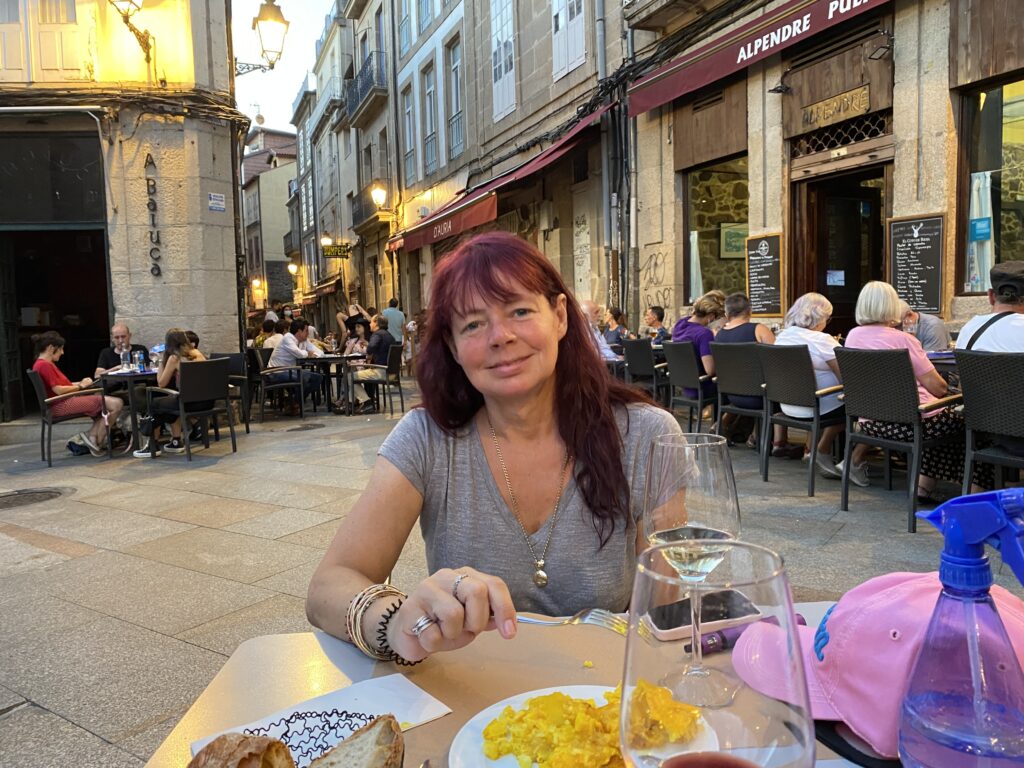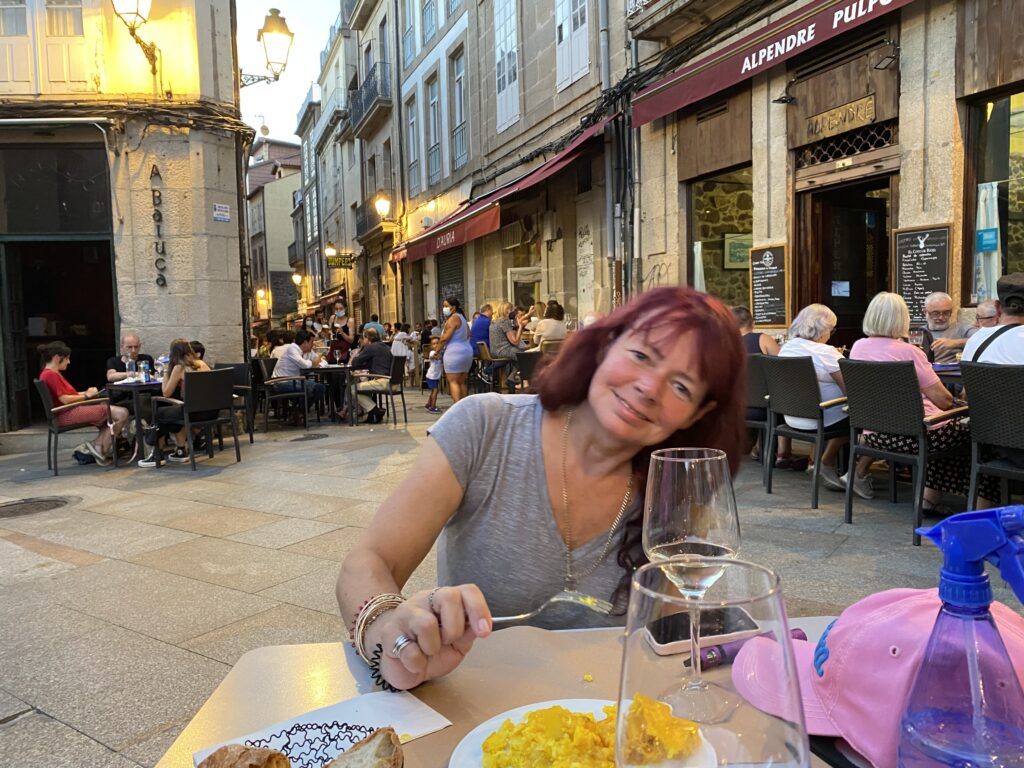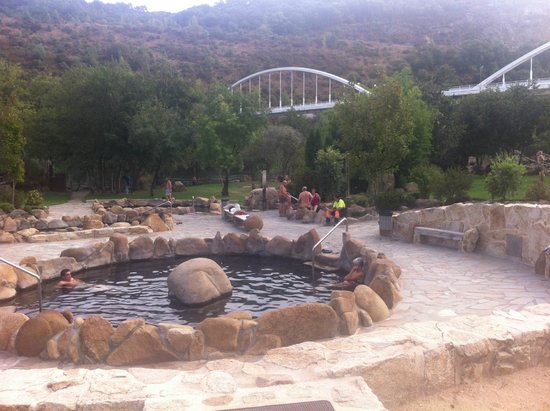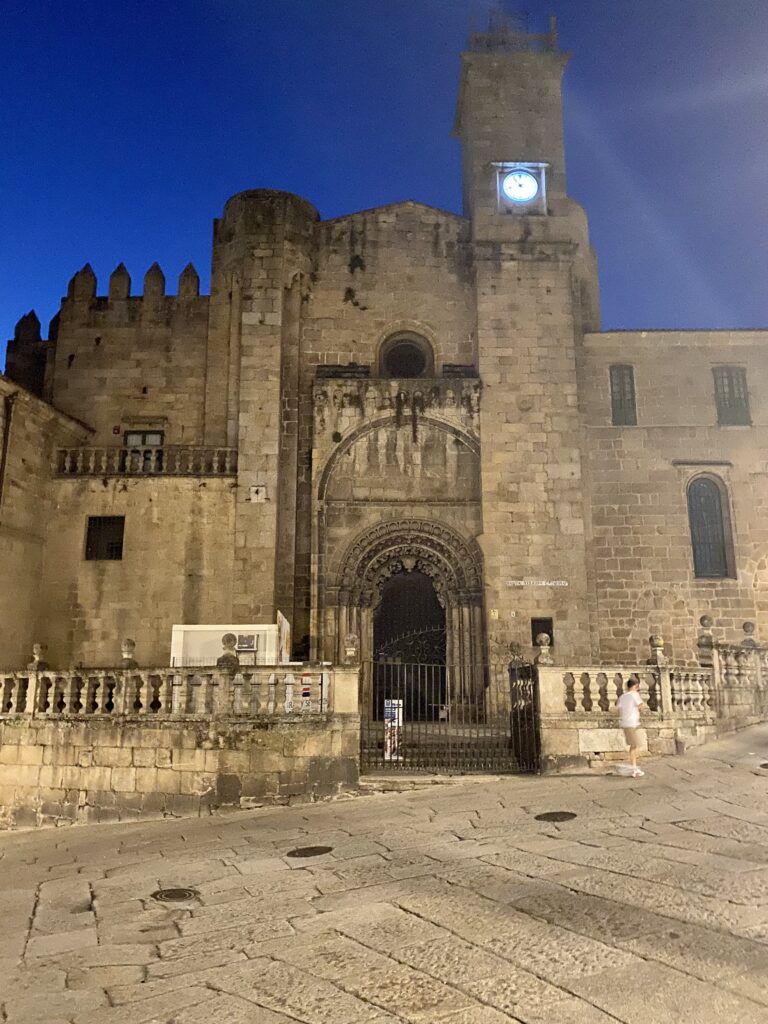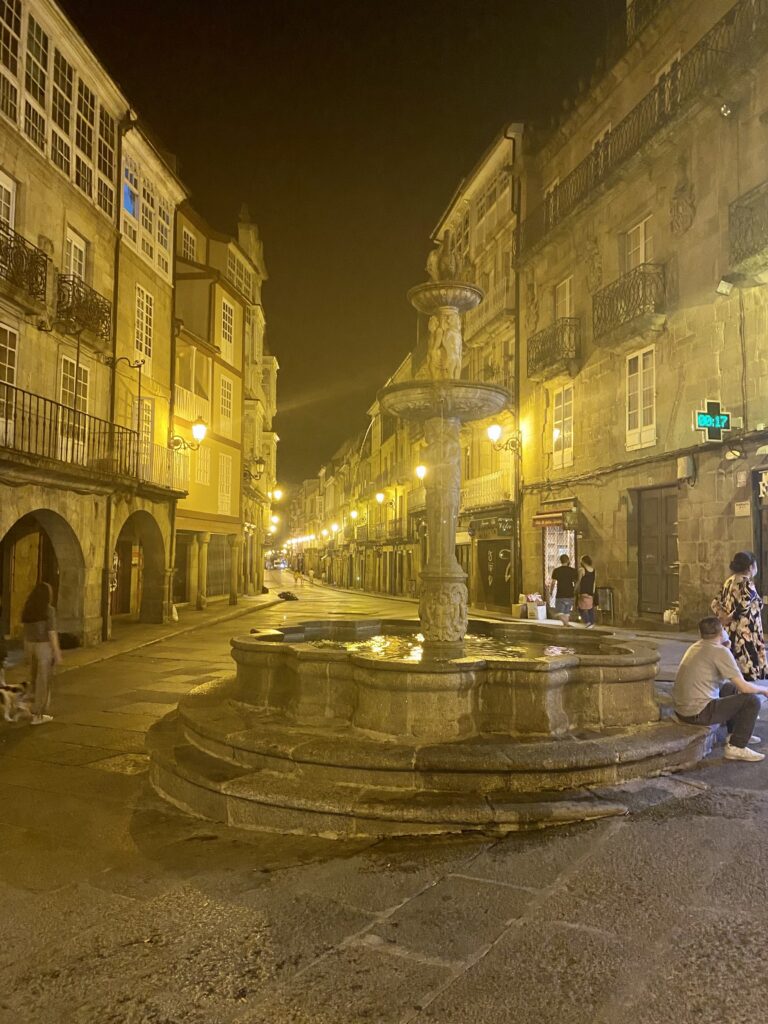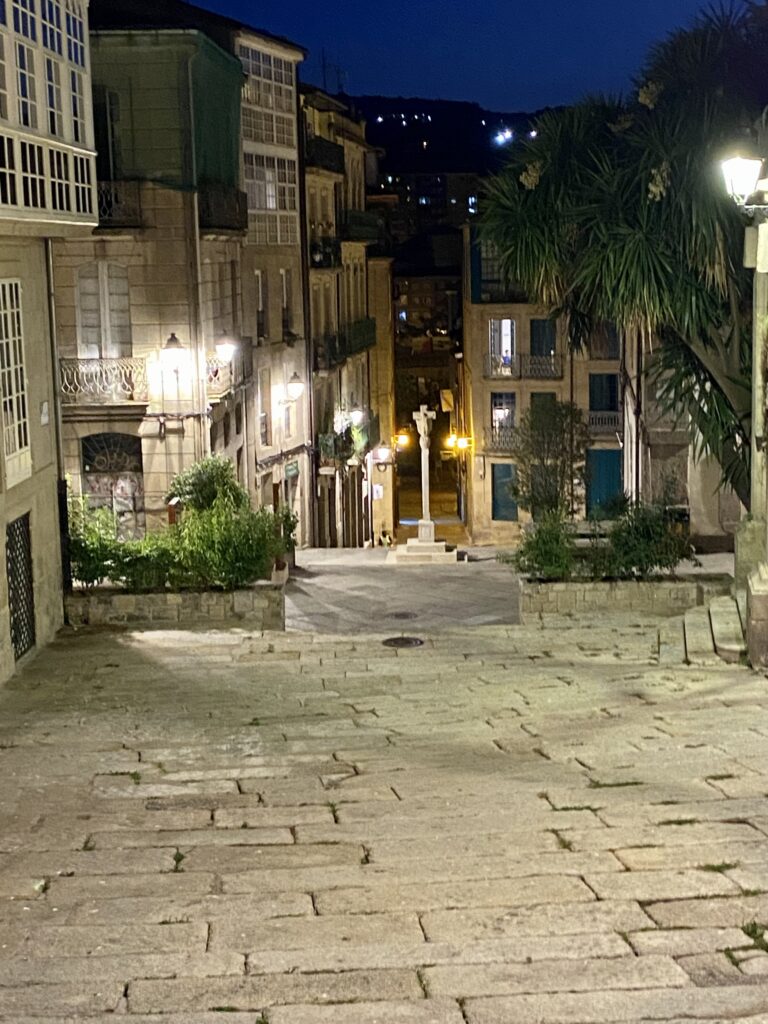We never made it to Muxia. On the way to our first stop at Finisterre, up along the Costa da Morte (the Coast of Death – so called because of the large number of shipwrecks ), we paused at Ezaro and so ran out of time. No matter. Muxia is famous for it’s beaches but we have already seen a great many wonderful beaches and I don’t doubt there will be more.
We paused at Ezaro as much to exercise the dogs as anything although a large sign by the side of the road suggested there was a waterfall in the area and we thought it might be worth a look (once the dogs had burned off some energy). The dogs enjoyed a run on Ezaro’s wide sandy beach and a little paddle both in the sea and a short way up the estuary of the River Xallas. It was as we were walking alongside the Xallas that we again saw the sign advertising a waterfall and the sign confirmed that it was no more than a kilometre or so away. Off we went.
The Fervenza Do Ezaro (to give the waterfall its full name) was formed when the river was dammed and a hydro electric power station was built in the middle of the 20th century. To start with the waterfall was not allowed to flow unless there was an excess of waterflow on the River Xallas but in 2011 pressure from various environmental groups forced the authorities to allow some “ecological flow” to allow local wildlife to recover. Now the 40 metre falls have become a local tourist attraction with viewpoints, cafes, souvenir shops, etc.
And on to Finisterre. During the period of Classical Antiquity, this precise part of Spain was considered to be the end of the world and the place where the sun died at dusk – hence it’s name which quite literally translates into the “End of the Earth” . To reach Finisterre, you simply follow the main road (the AC 445) through the fishing town of Finterre towards the lighthouse along some quite spectacular coastline. Ordinarily, Finisterre would be packed with people because, following the success of the Martin Sheen film “The Way” (which saw him and his fellow pilgrims continue their walk of the Camino de France on through Santiago de Compostela to Finisterre), the extra three days walking to Finisterre has become quite the norm. The place was surprisingly quiet as we arrived no doubt because of Covid travel restrictions. I’m not complaining.
The extra three days walk from Santiago de Compostela has actually developed into yet another Camino (there are a great many of them nowadays as different towns and villages cash in on what has become a tourist phenomena) known as the Santiago to Finisterre Compostela and an office within the lighthouse offers walker certificates. Please do not misunderstand me; I am not having a go at Camino travellers (be they pilgrims or just walkers); I have total respect for all those people who have completed any one of the original Camino’s to Santiago and those who continue on to Finisterre deserve particular credit (I’d like to do it myself) but, it is becoming farcical now with increased commercialism, new routes being developed and/or many of the original routes now paved or covered in asphalt and, worst of all, with an increasing number of ‘pilgrims’ completing the Camino on mountain bikes, etc. It could be cars next.
It is still a pretty place.


